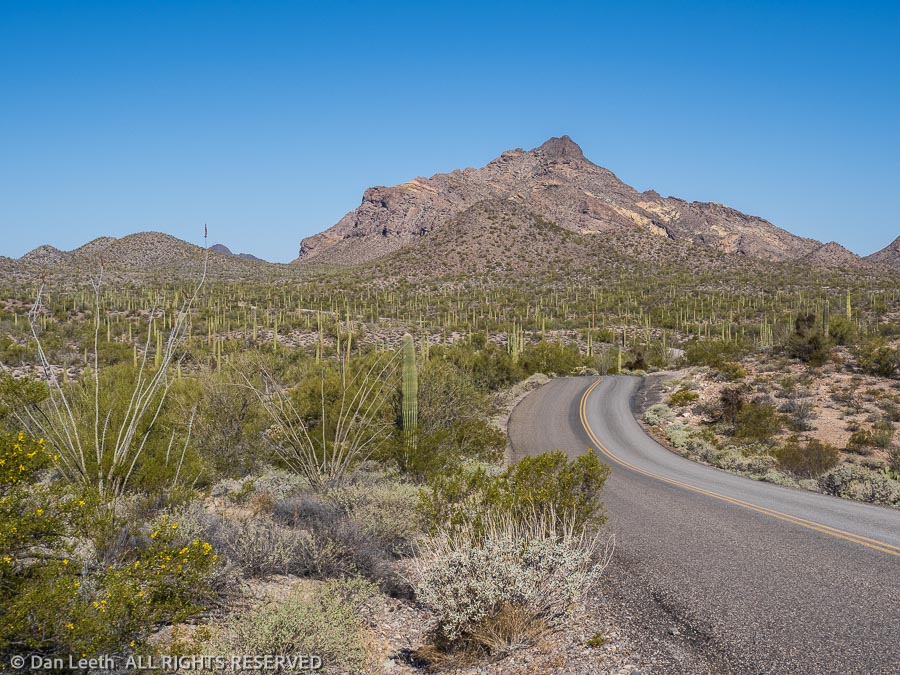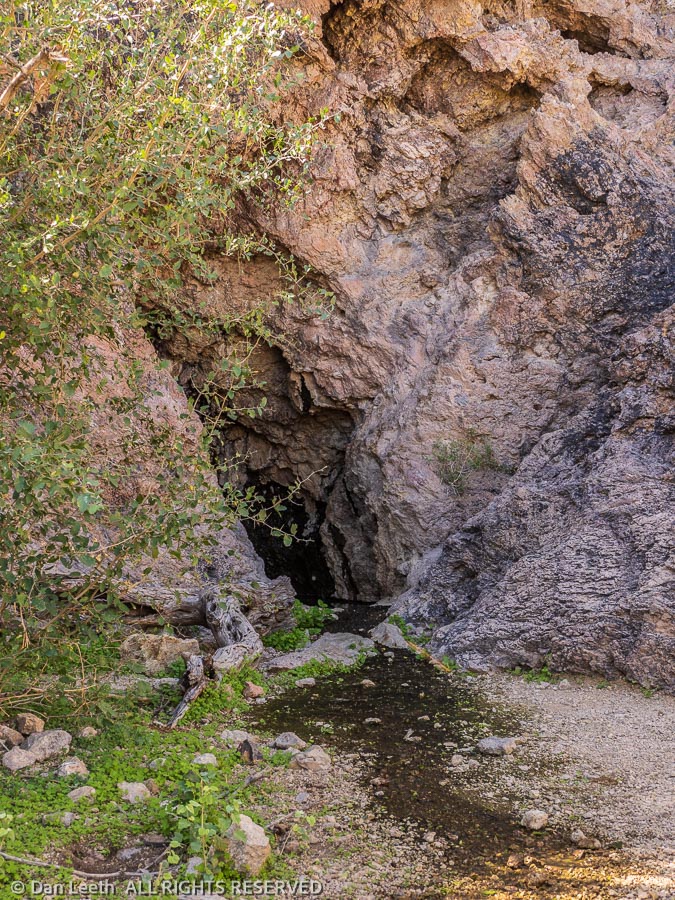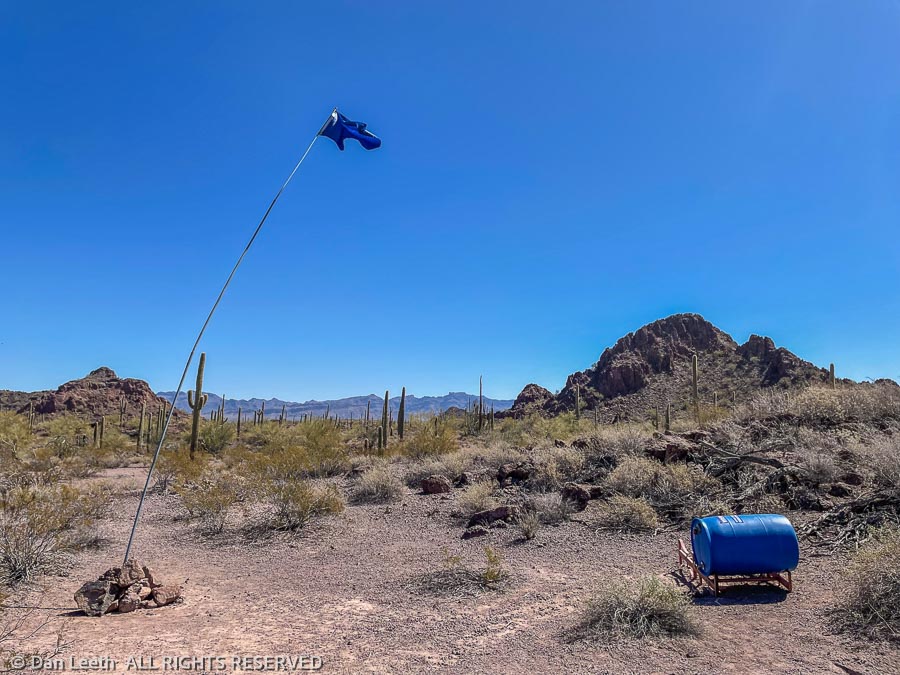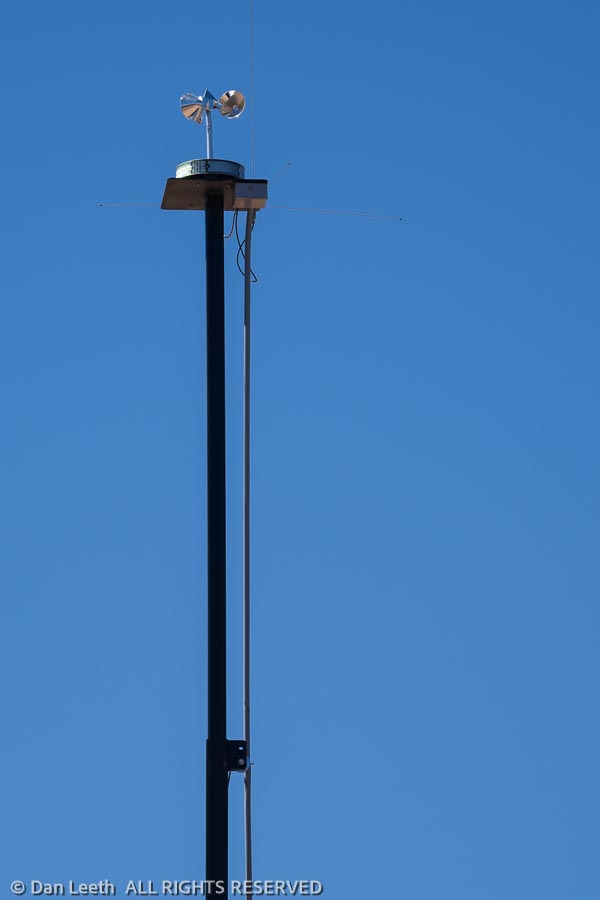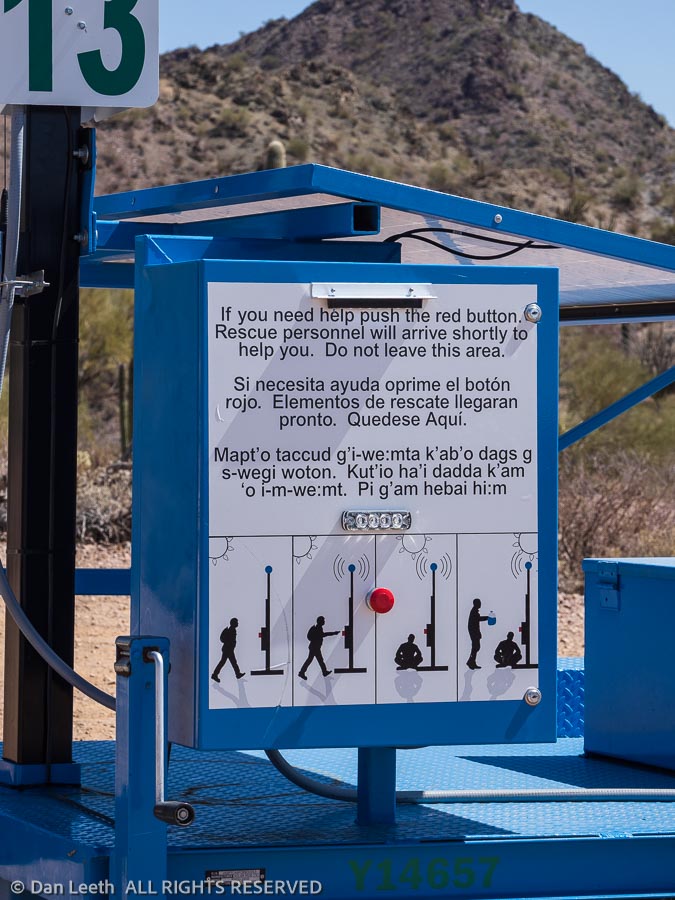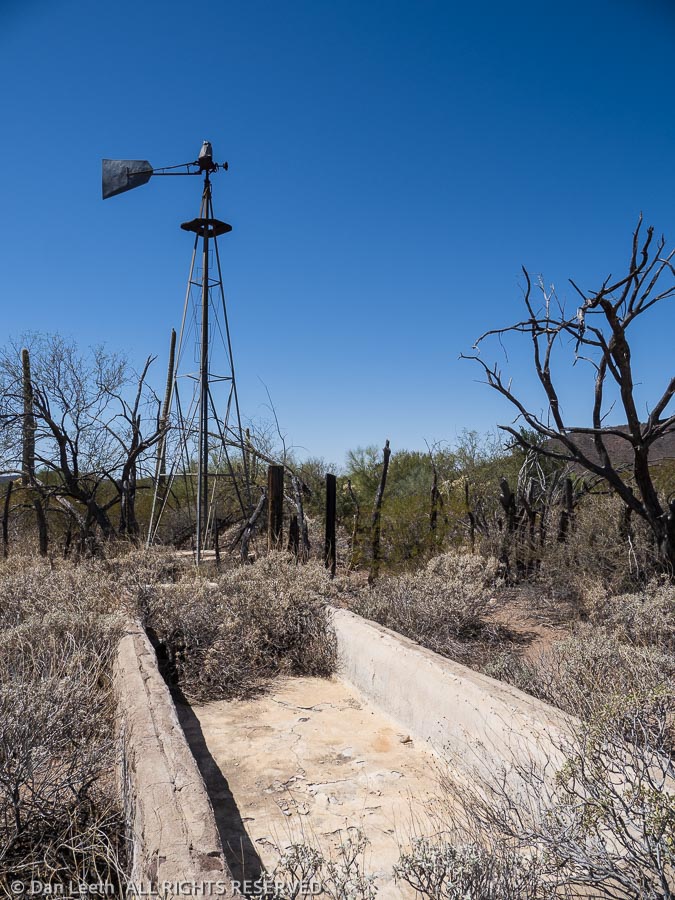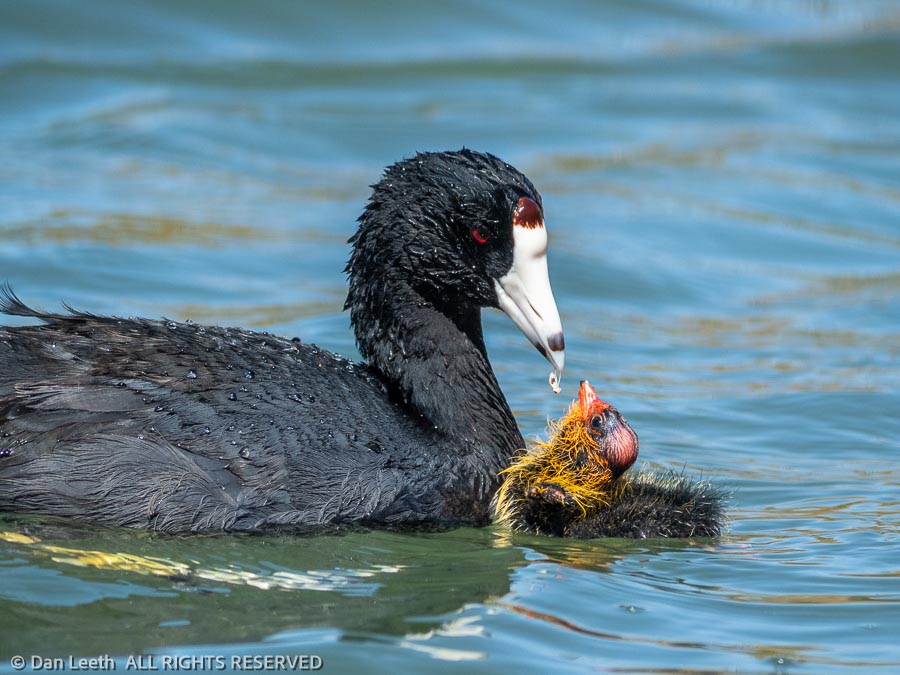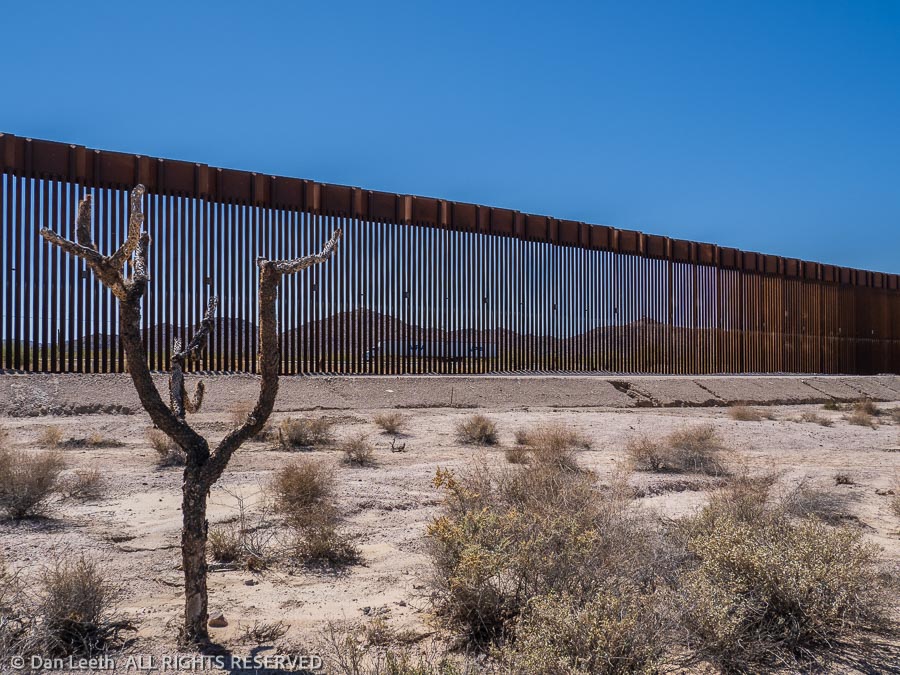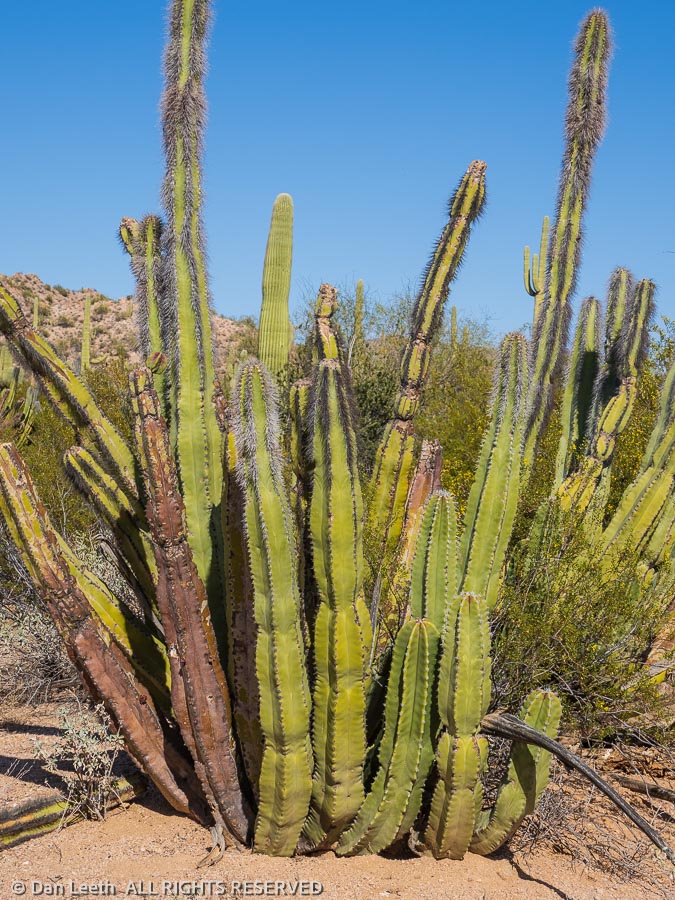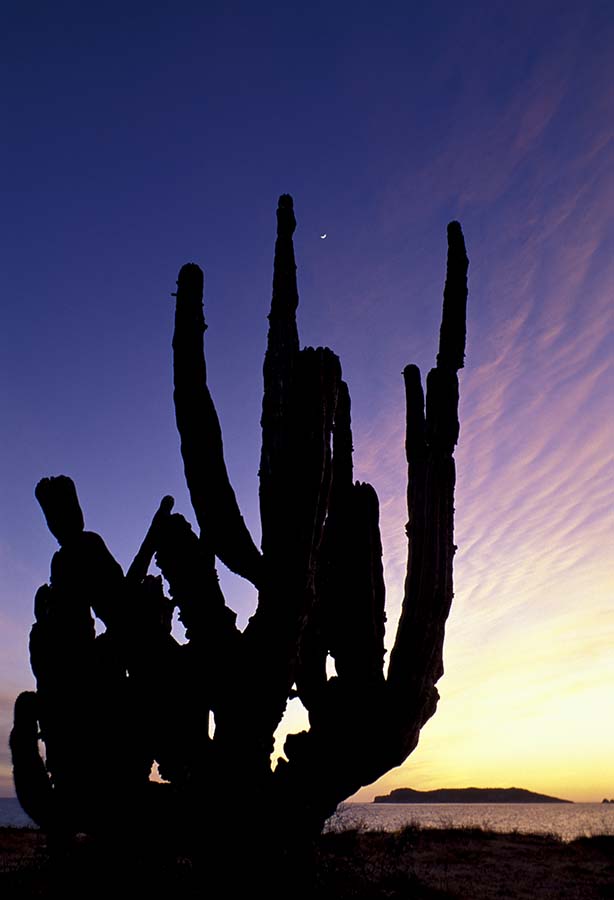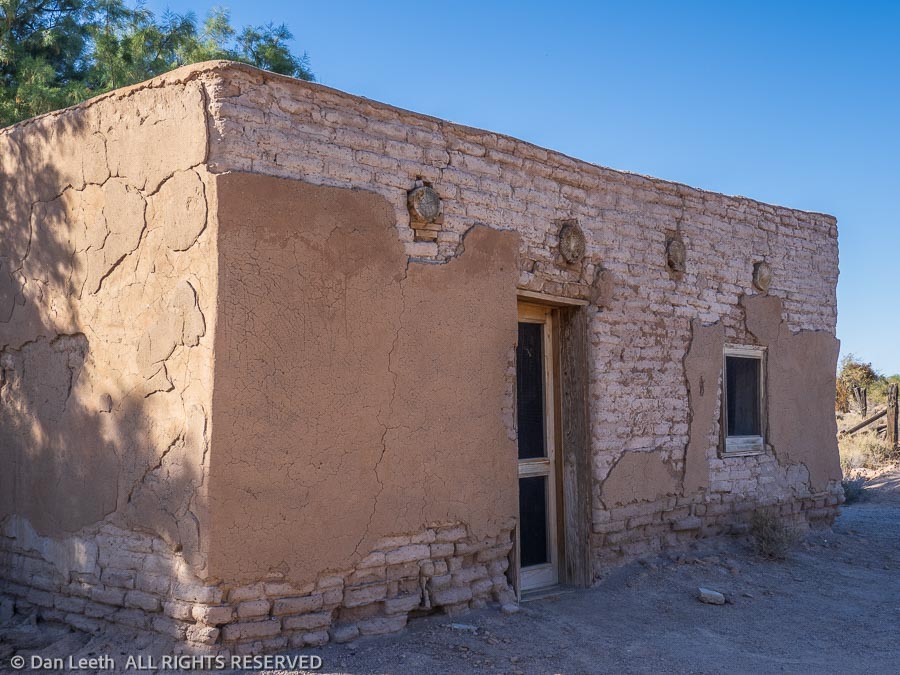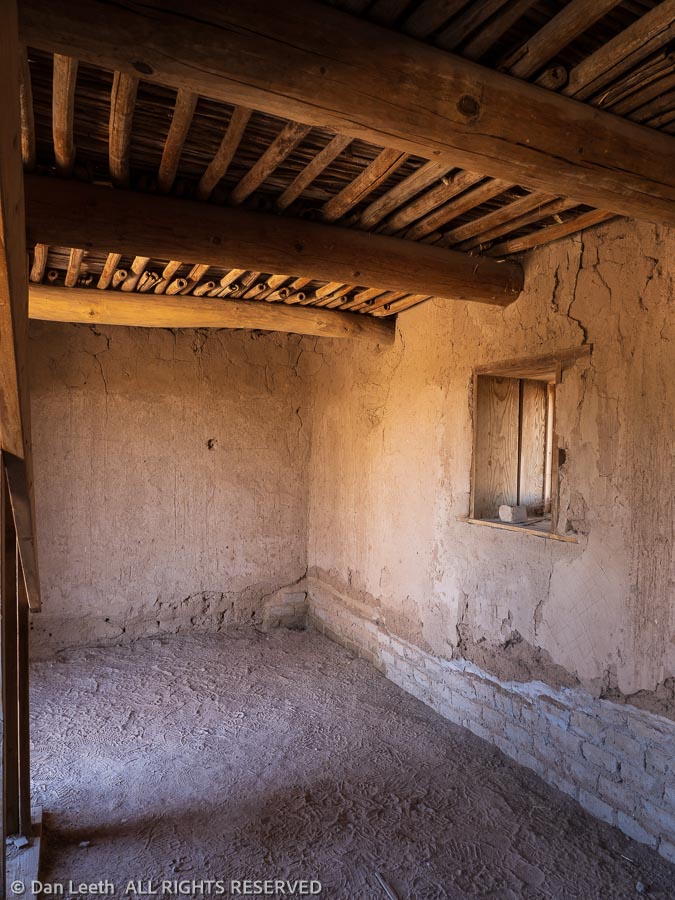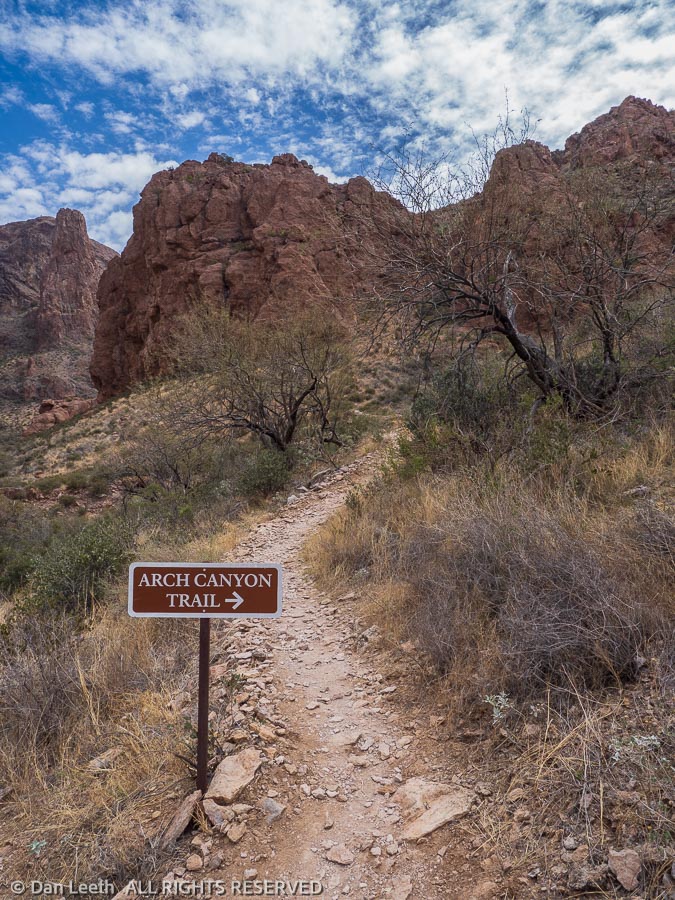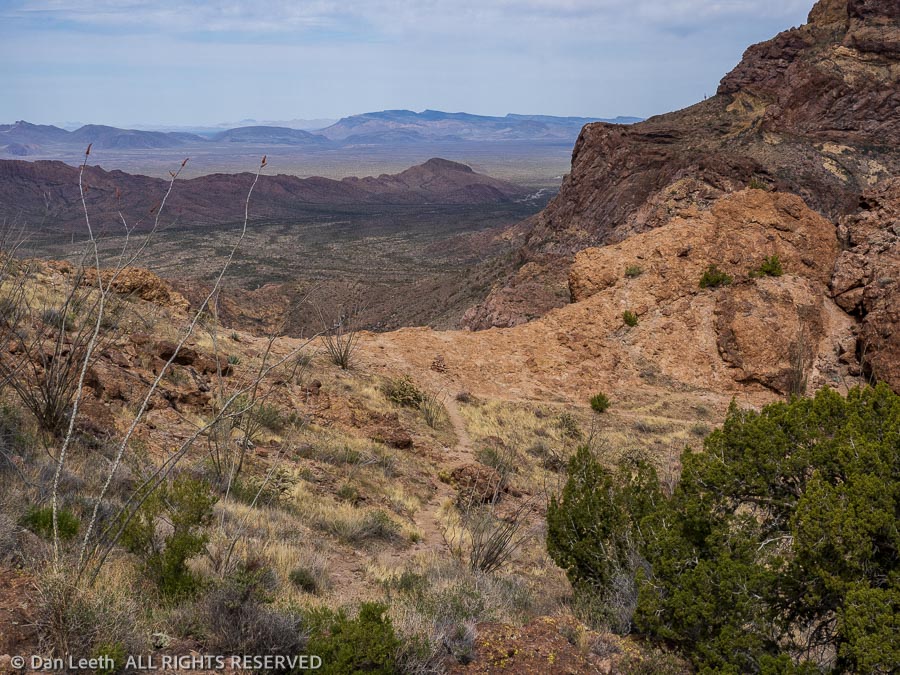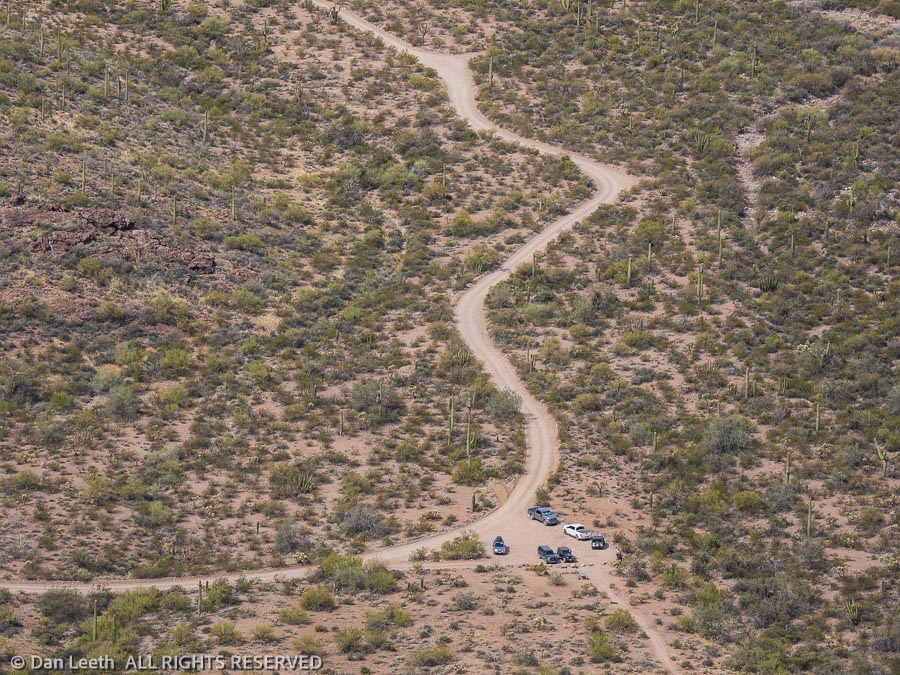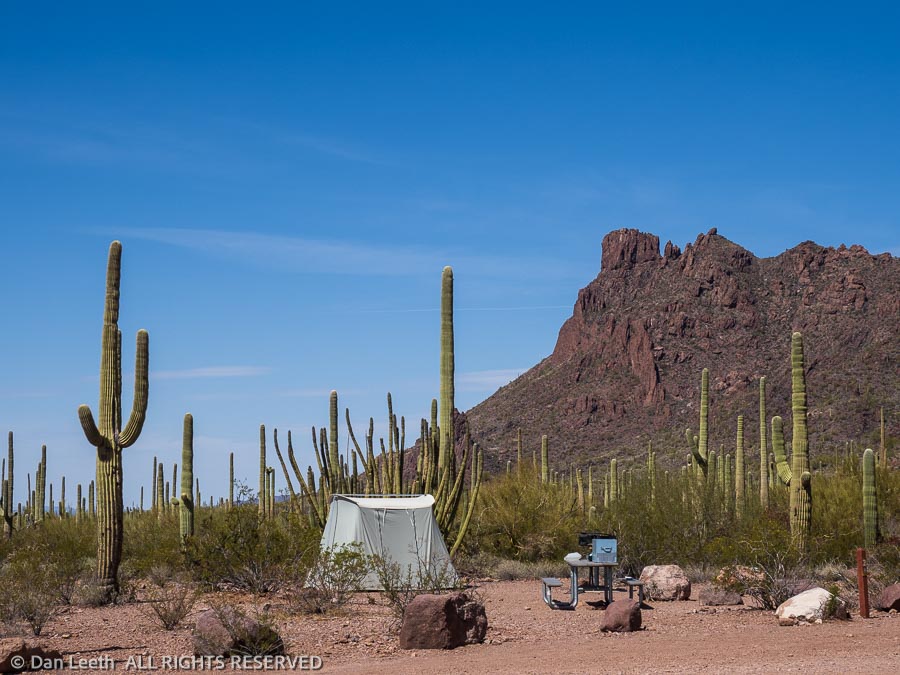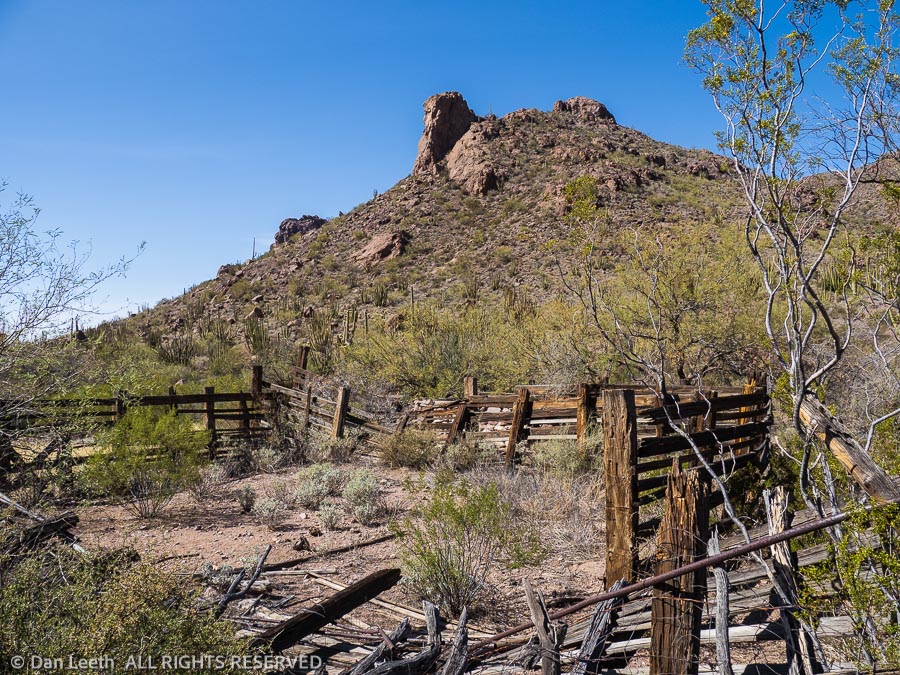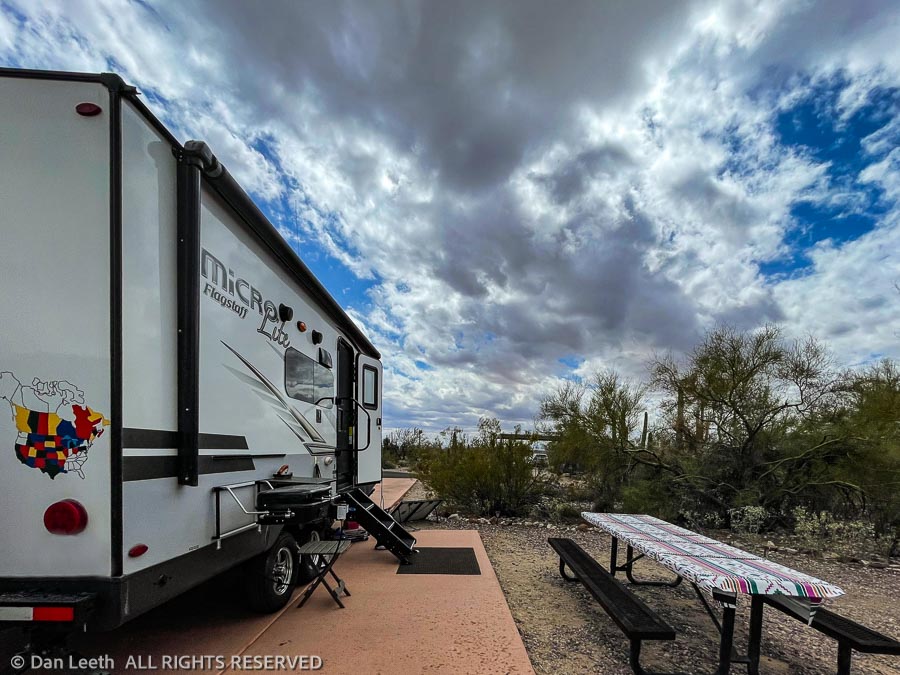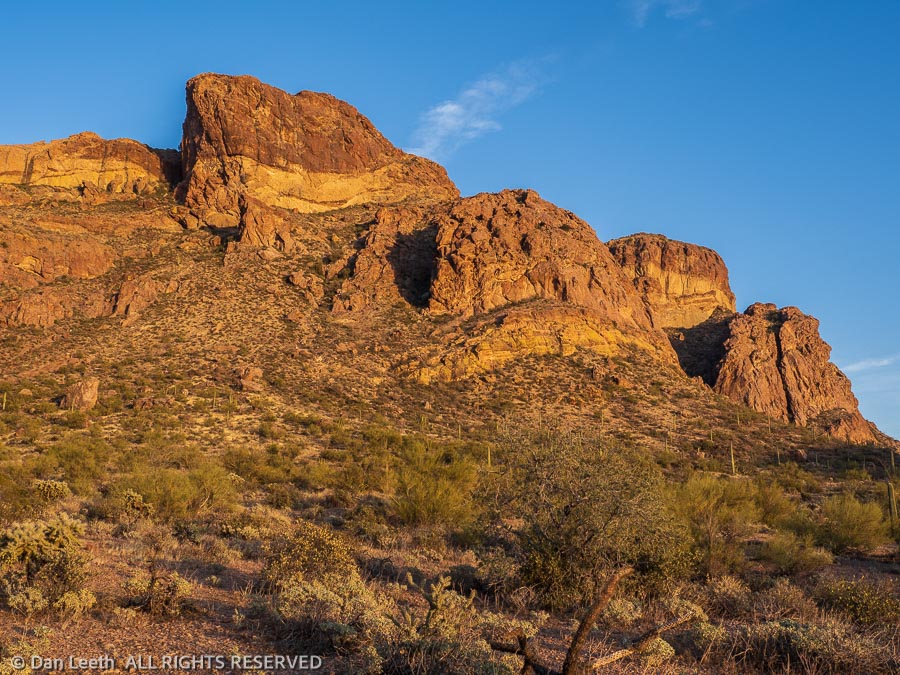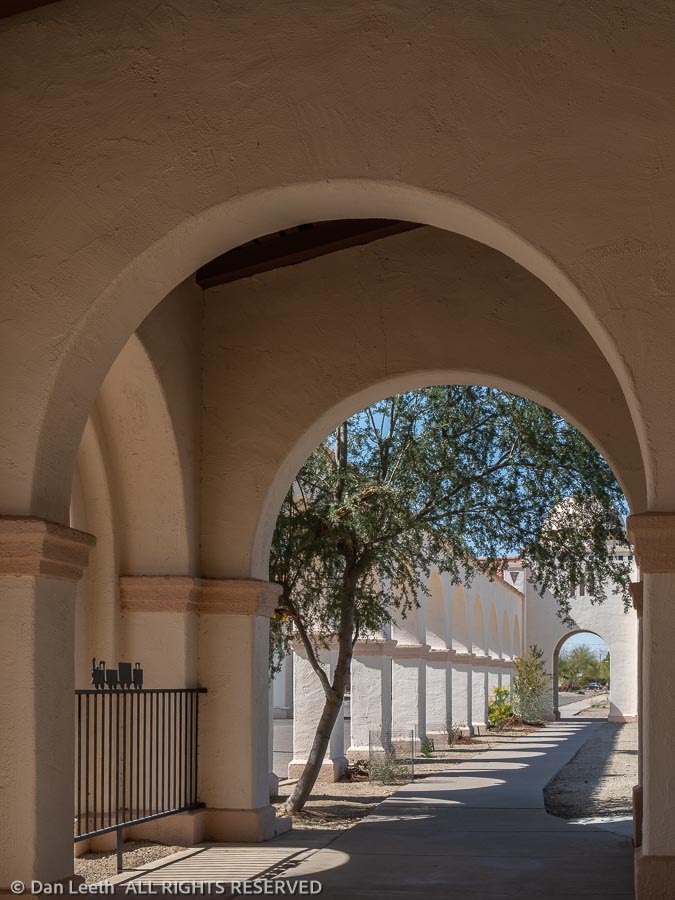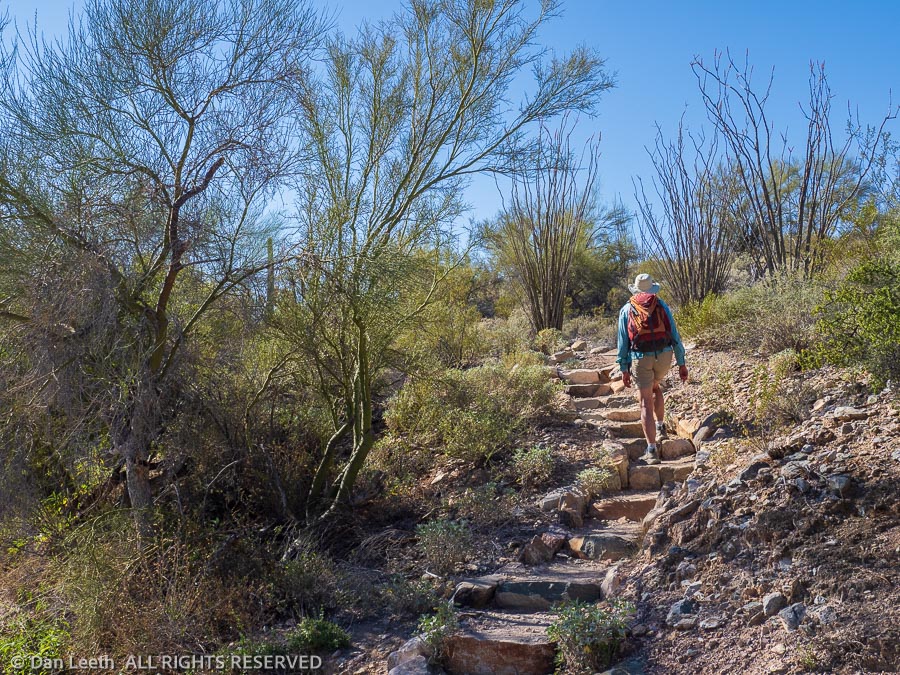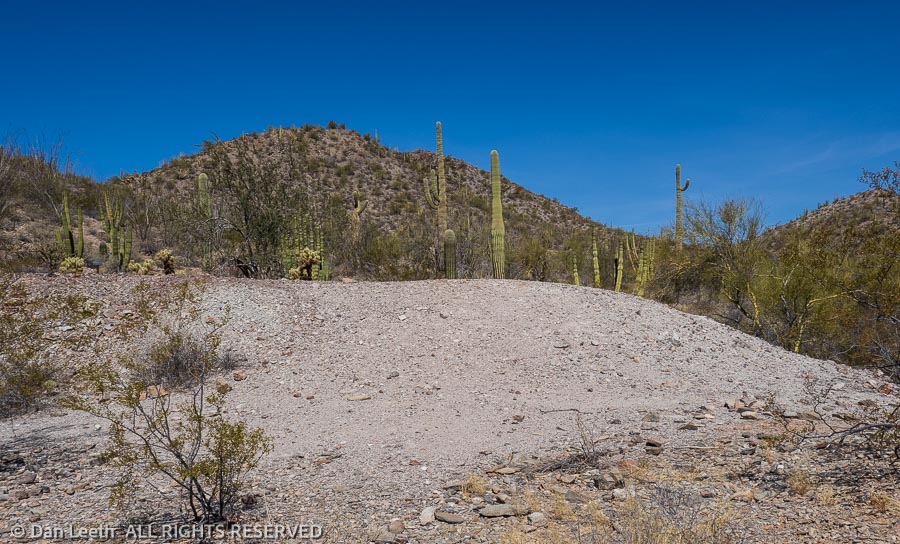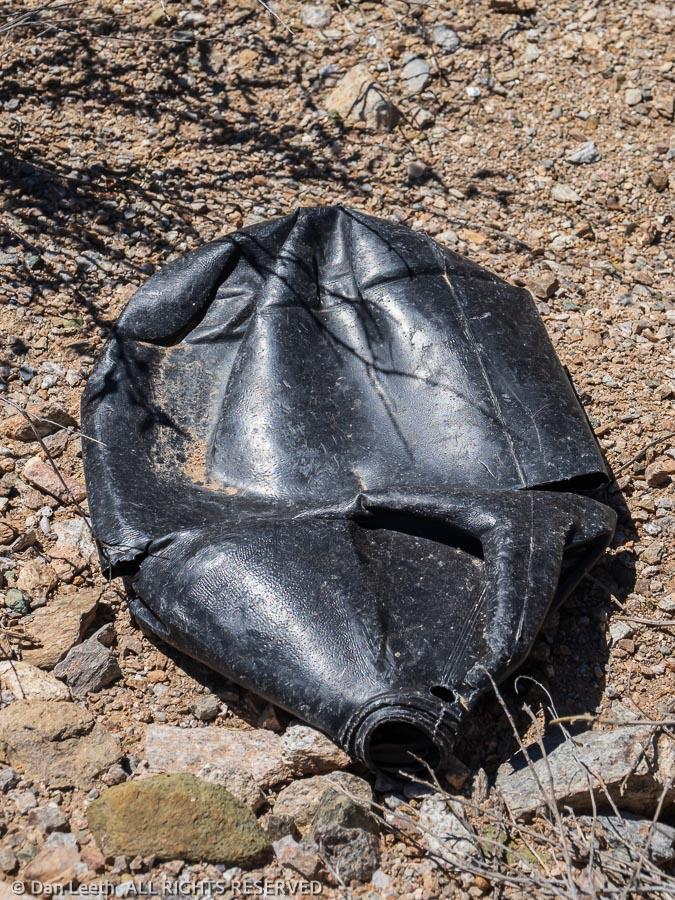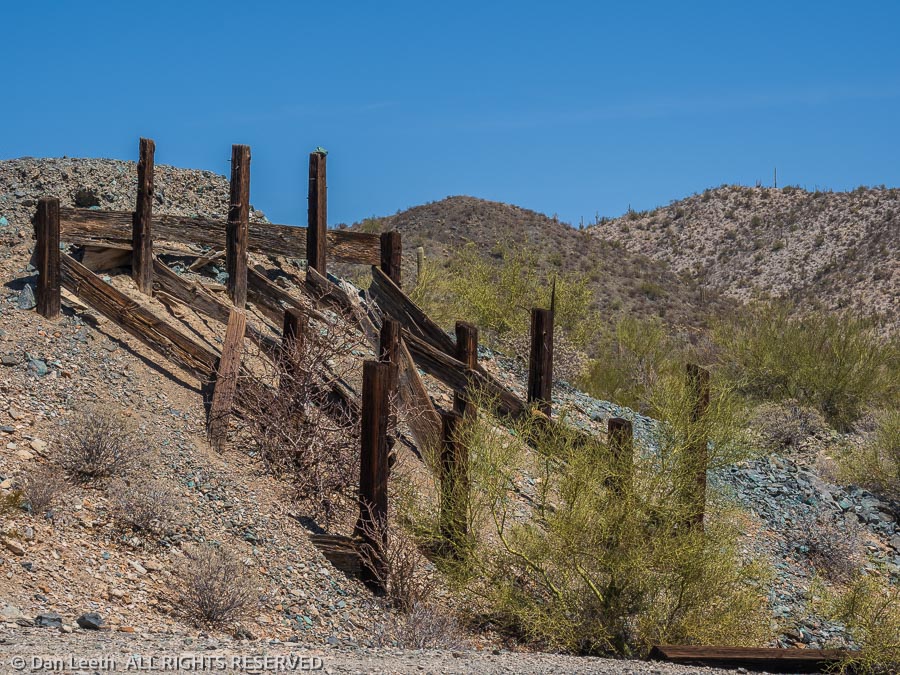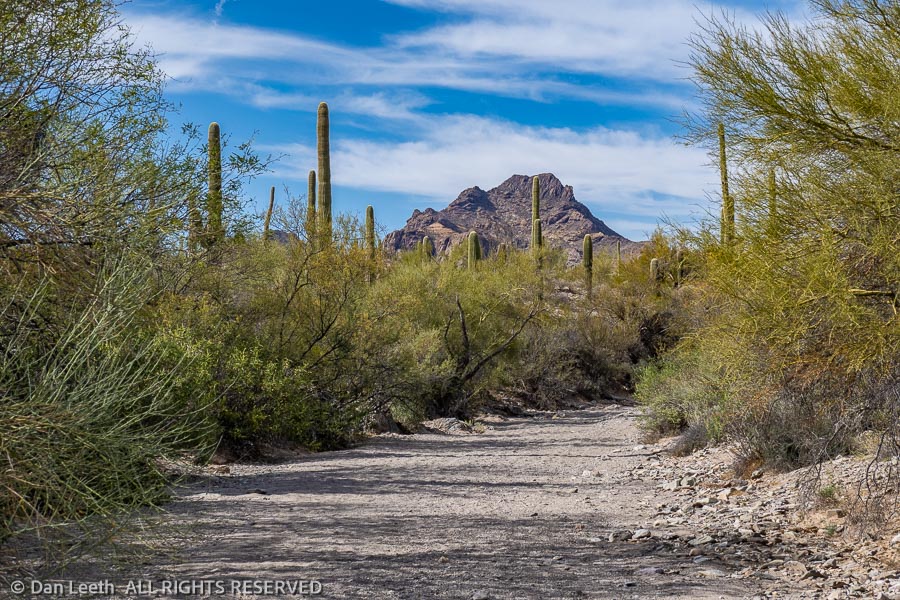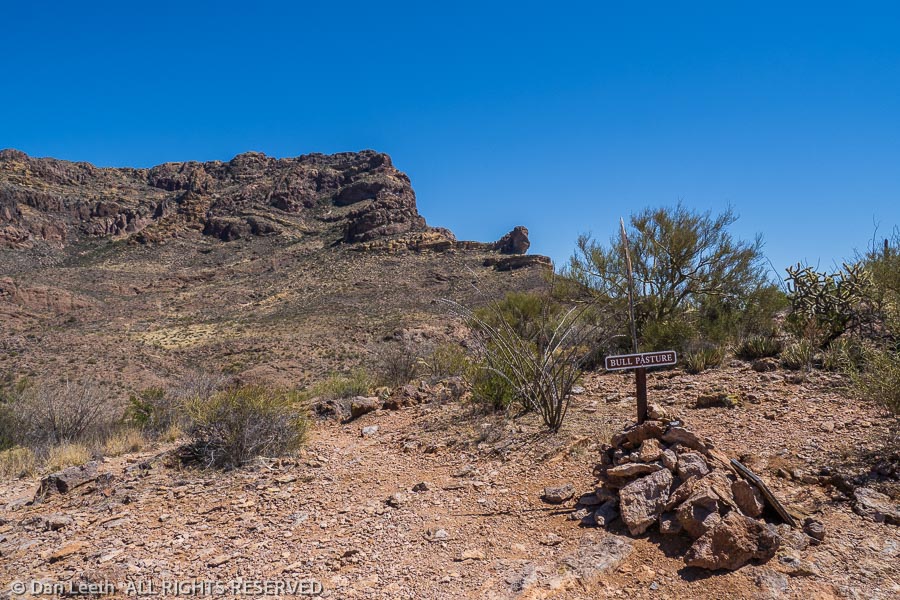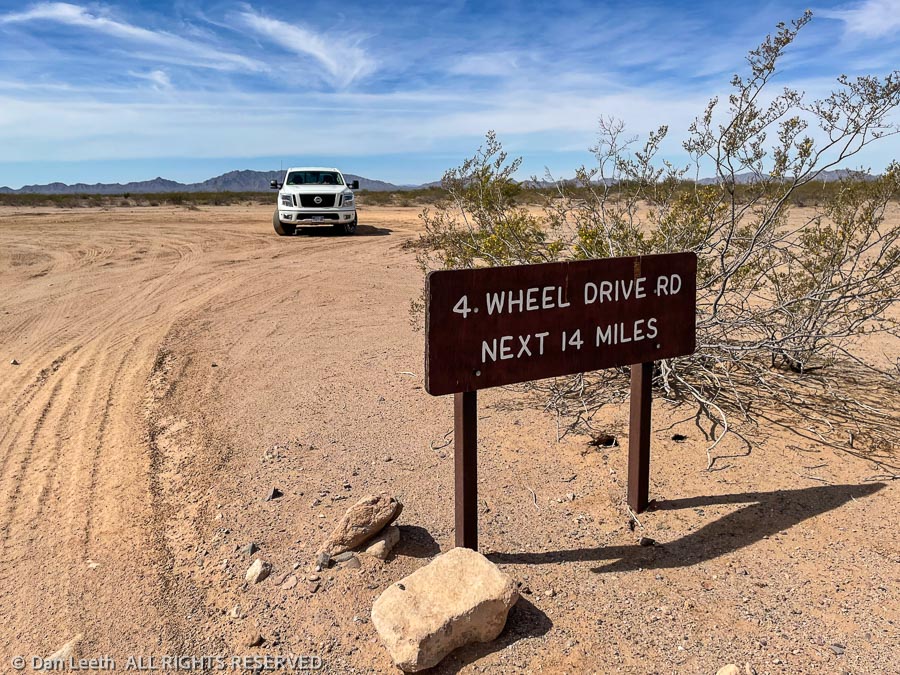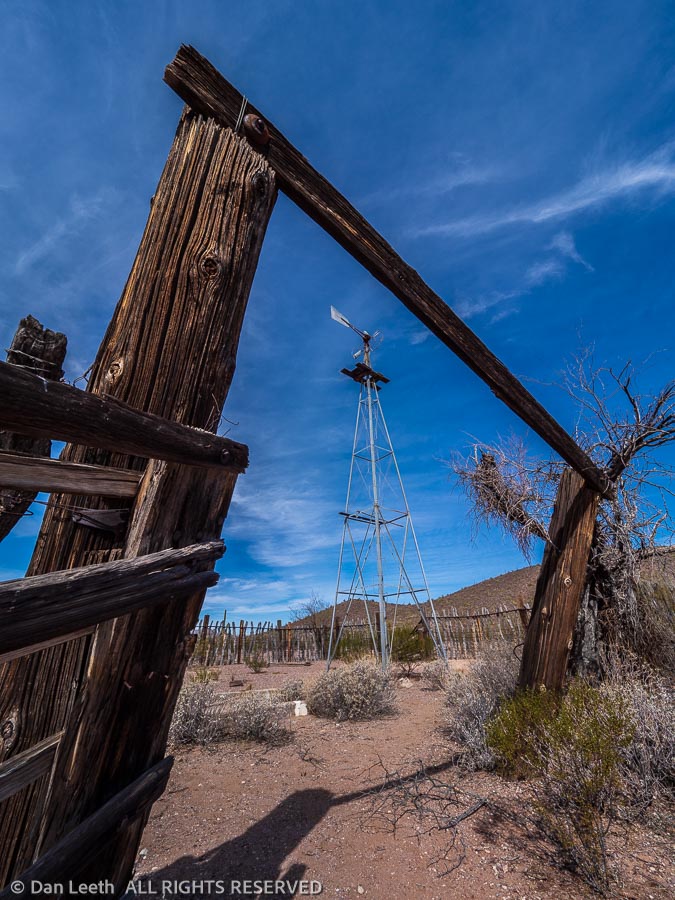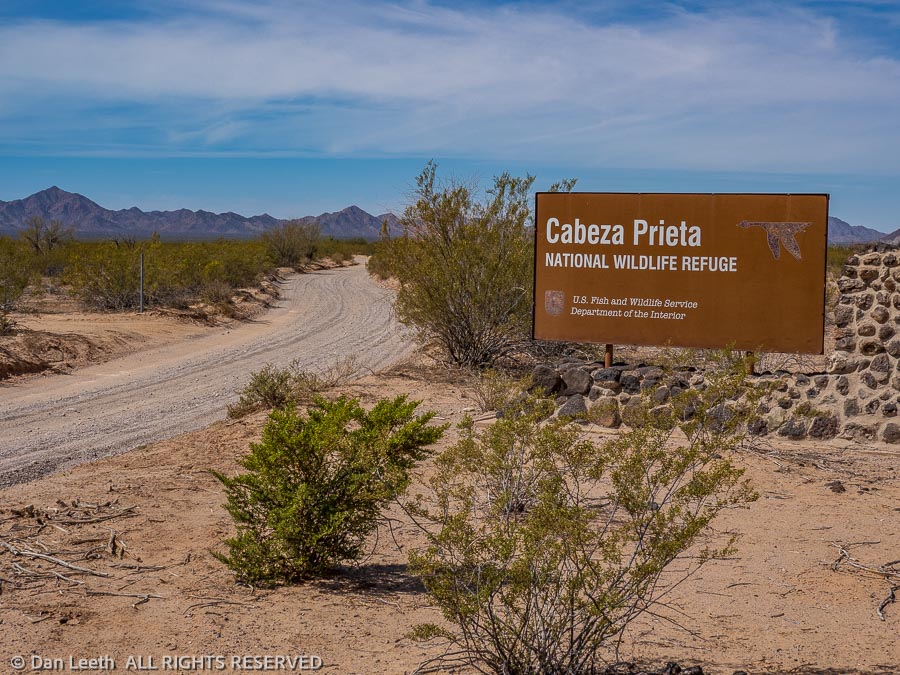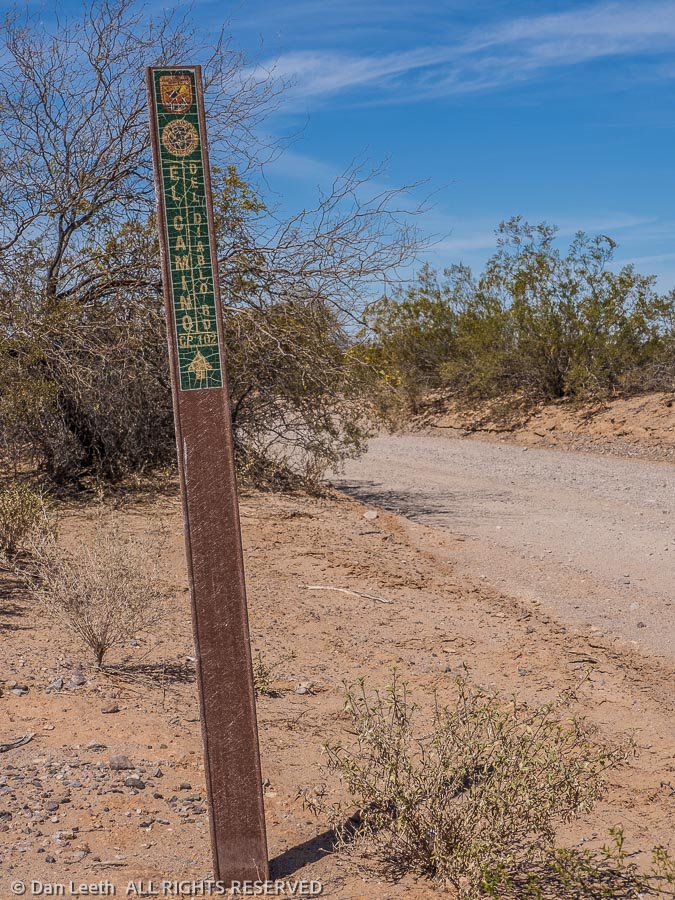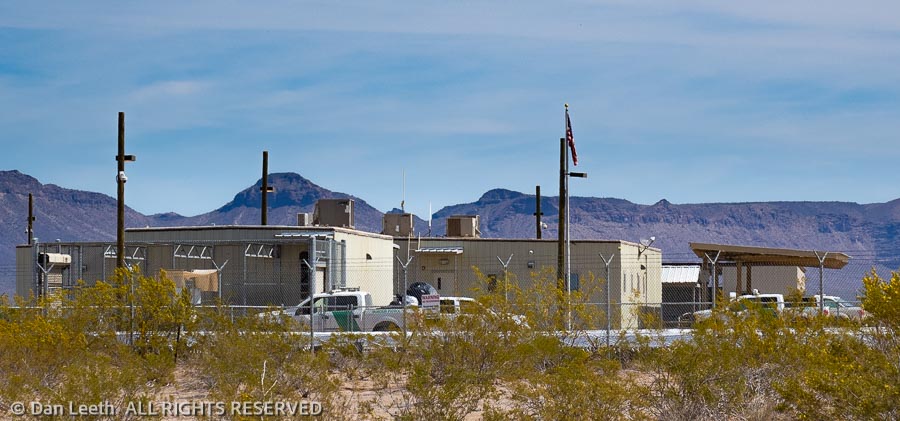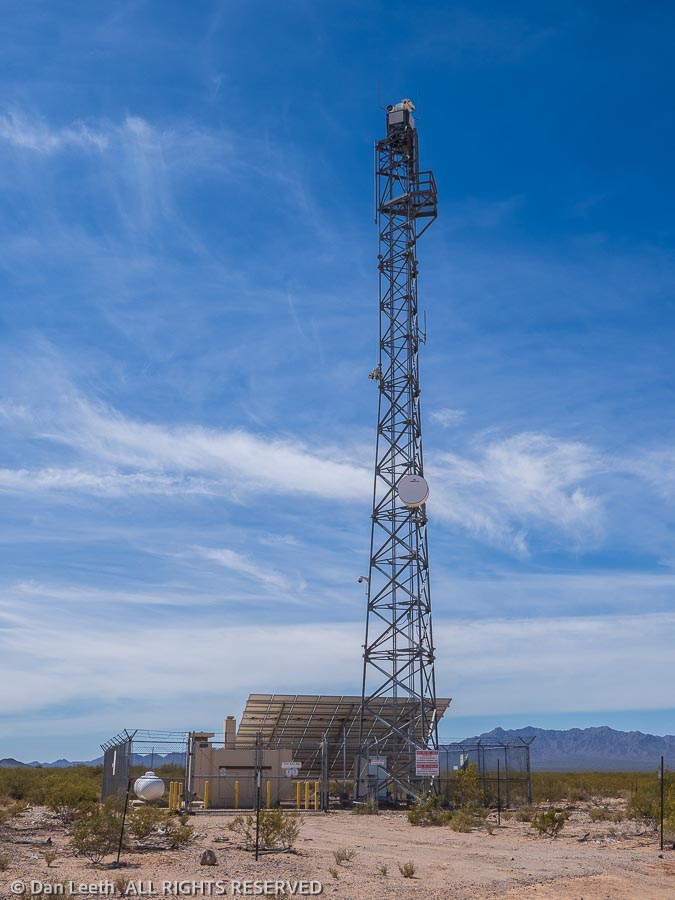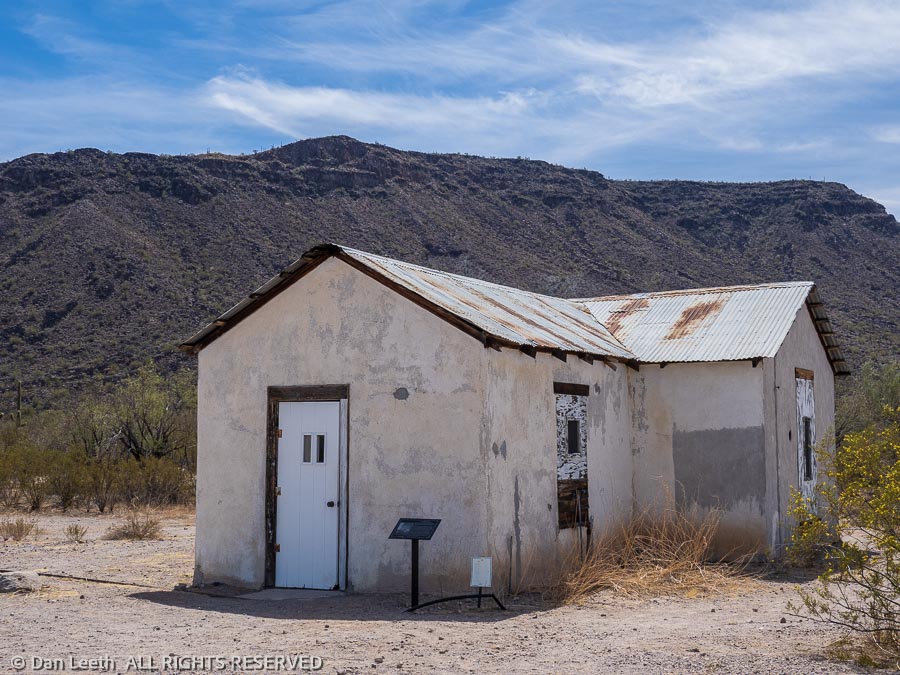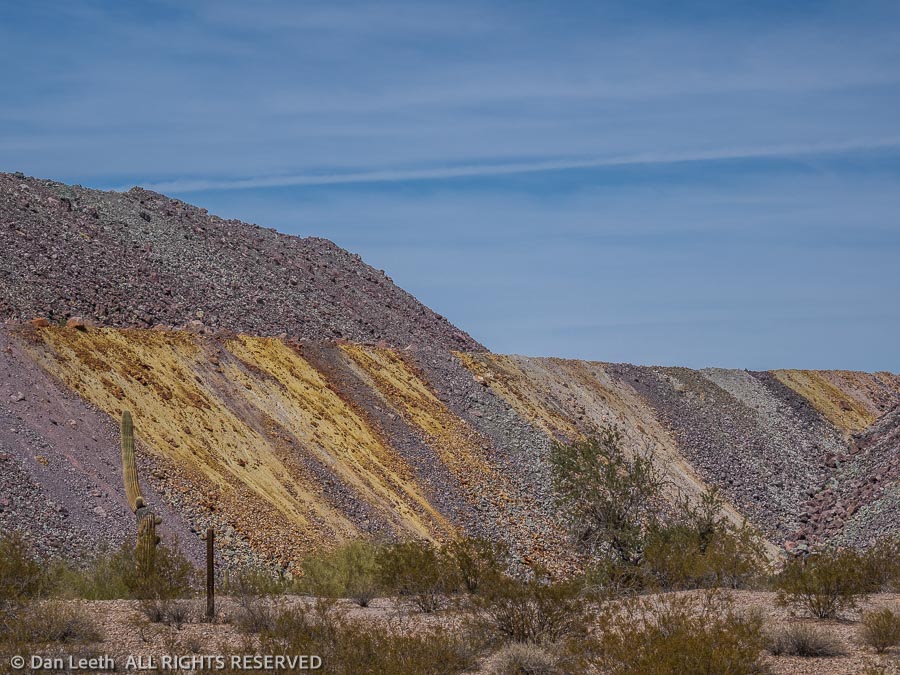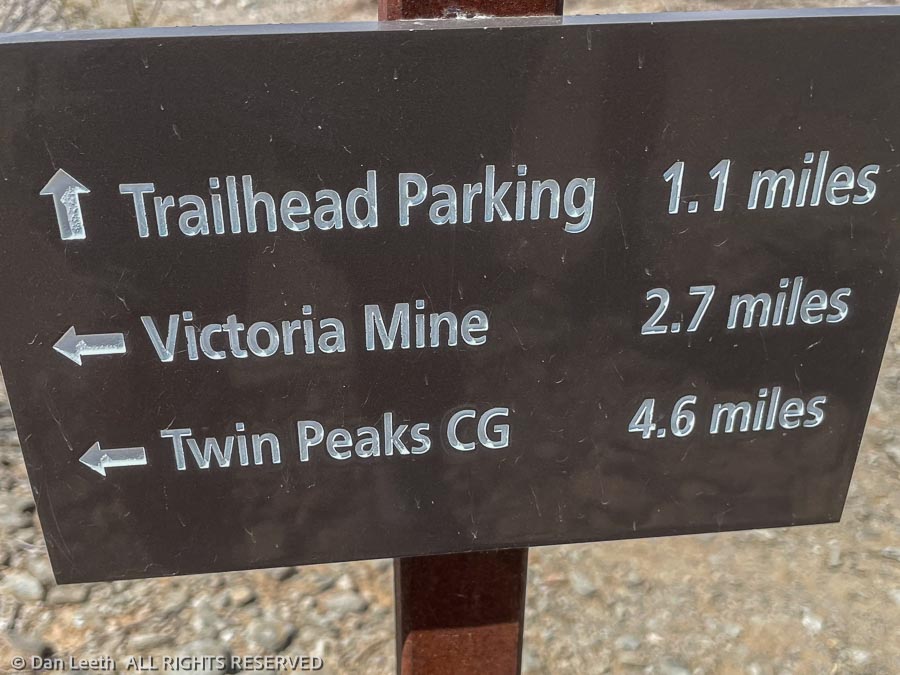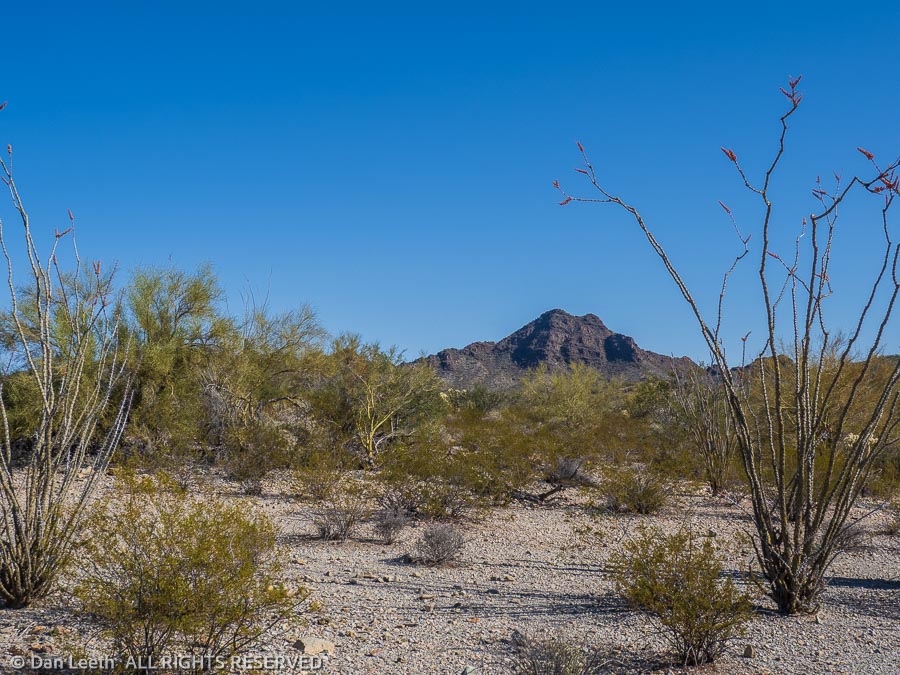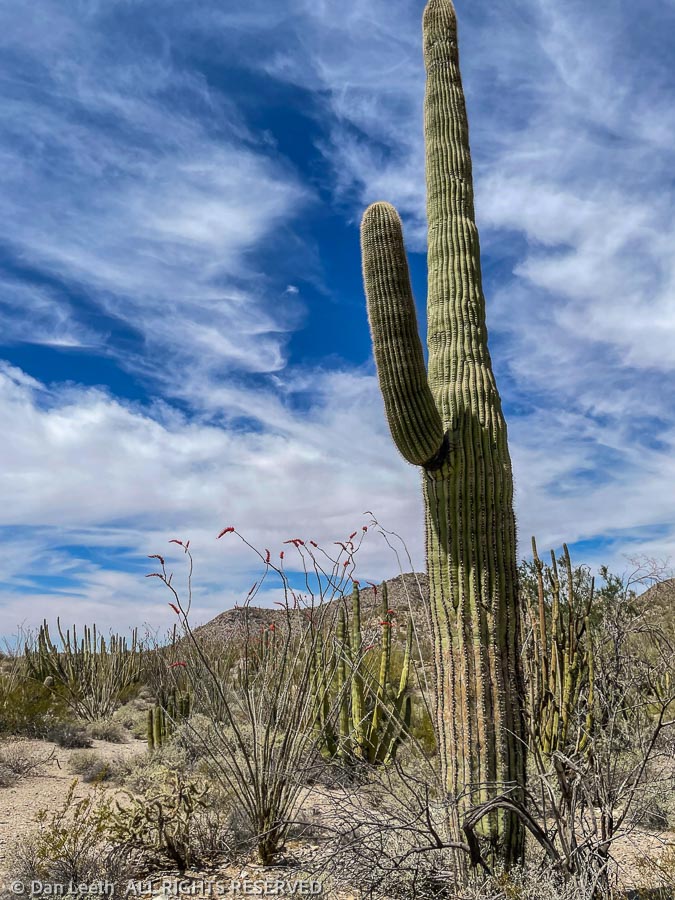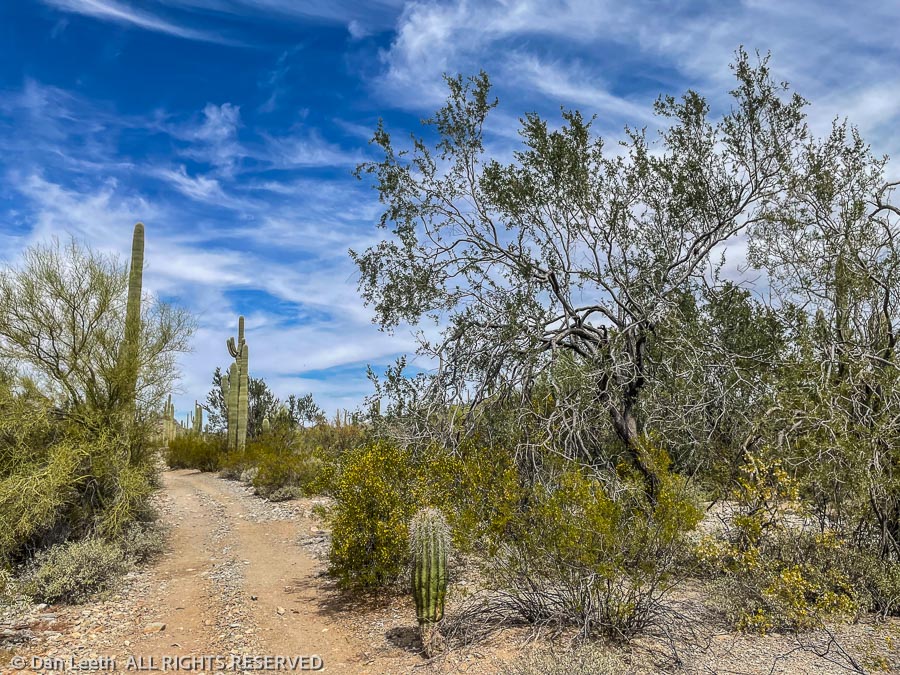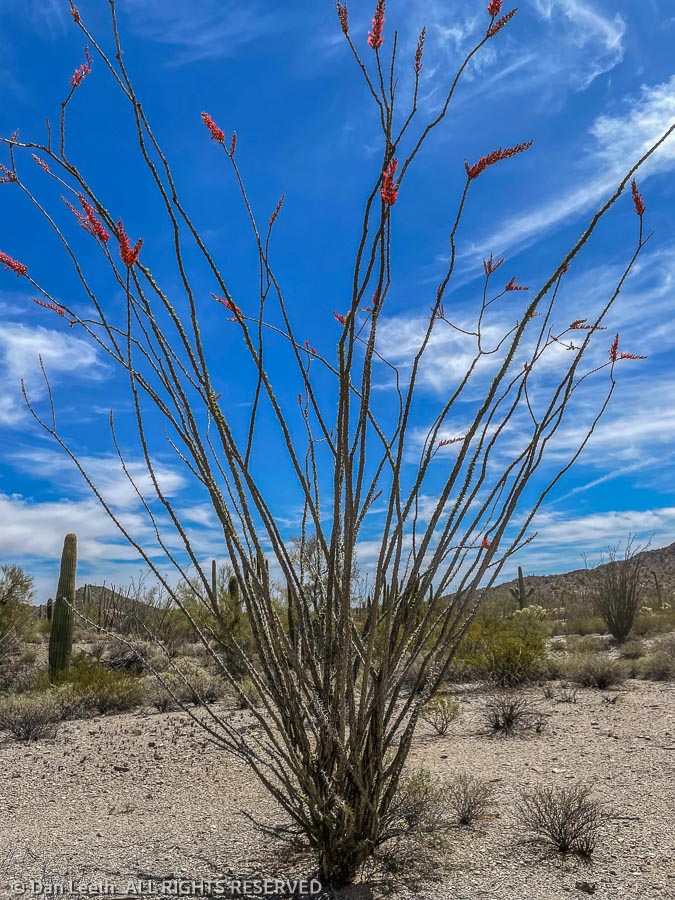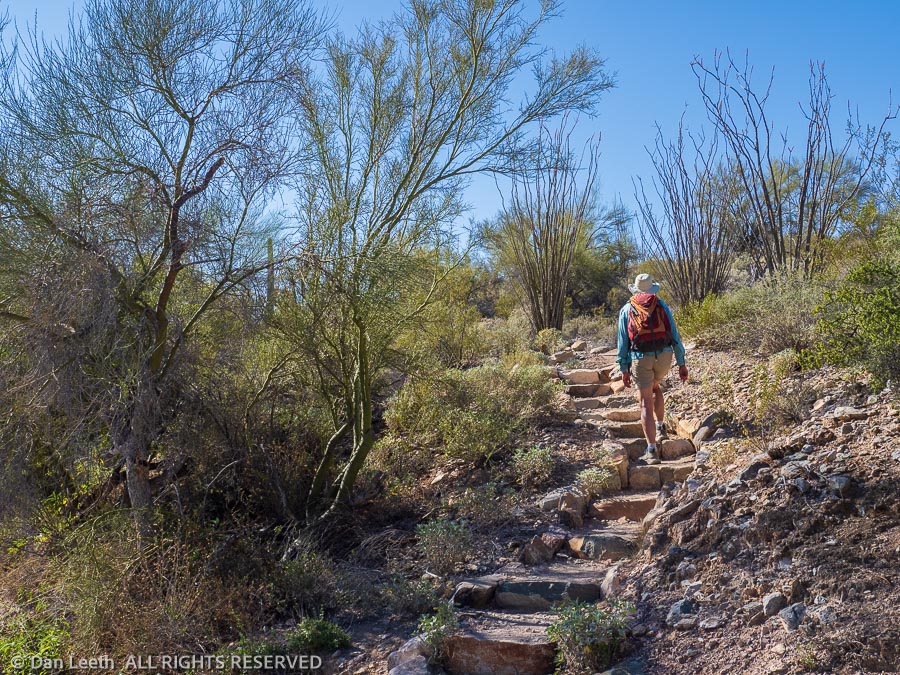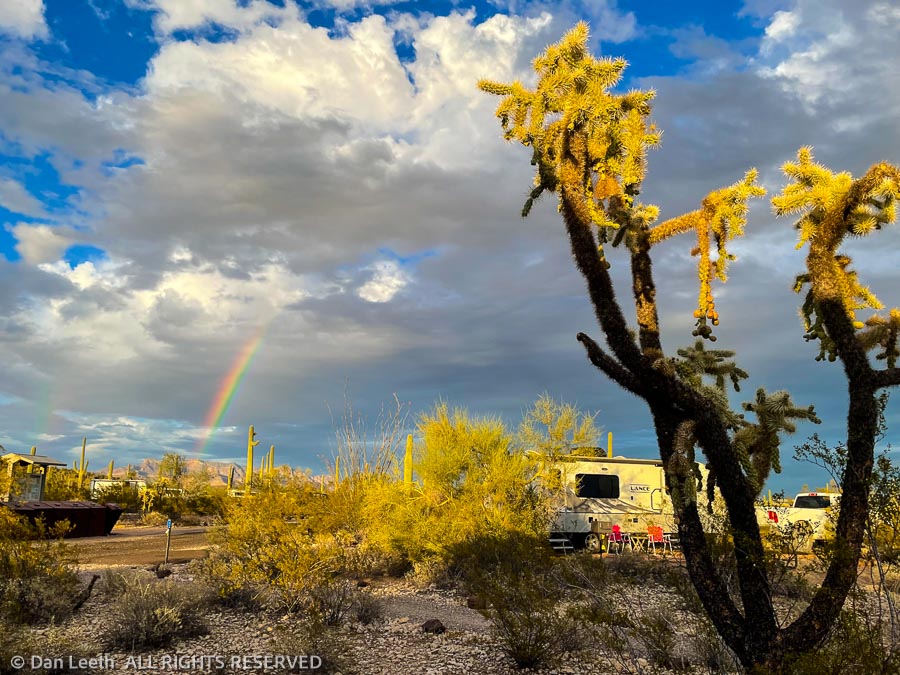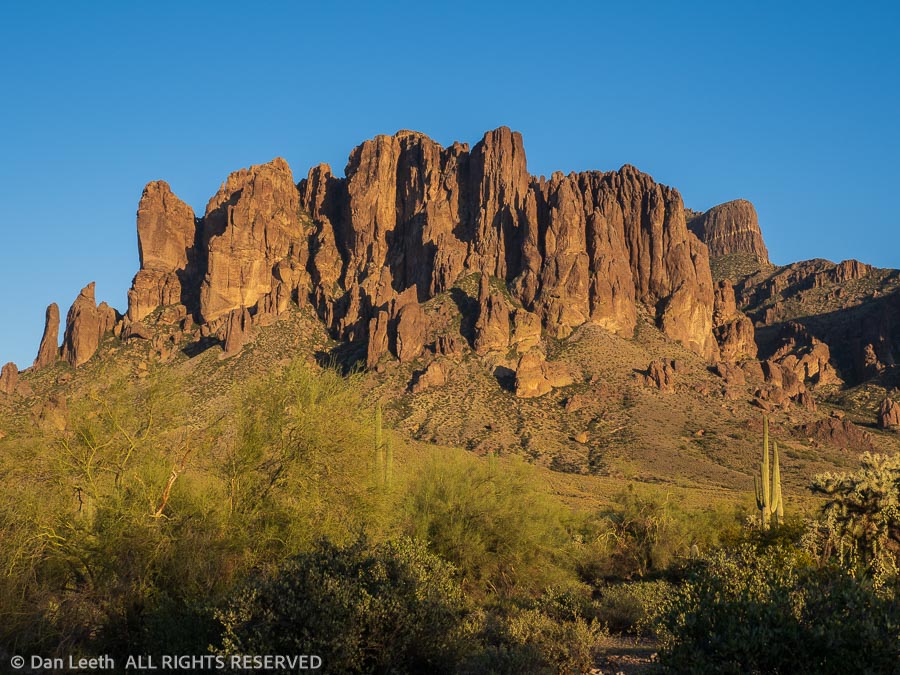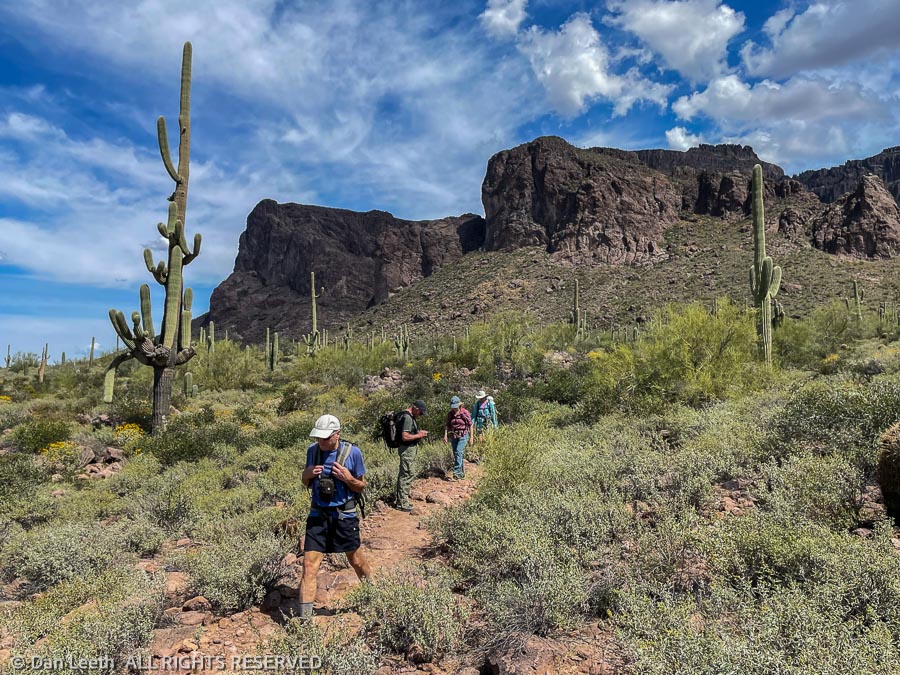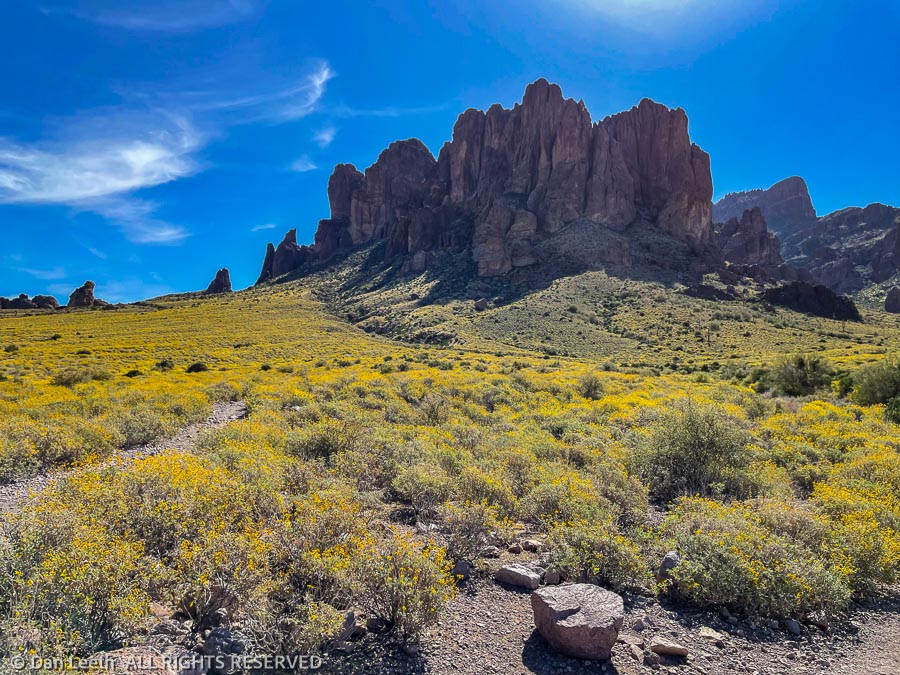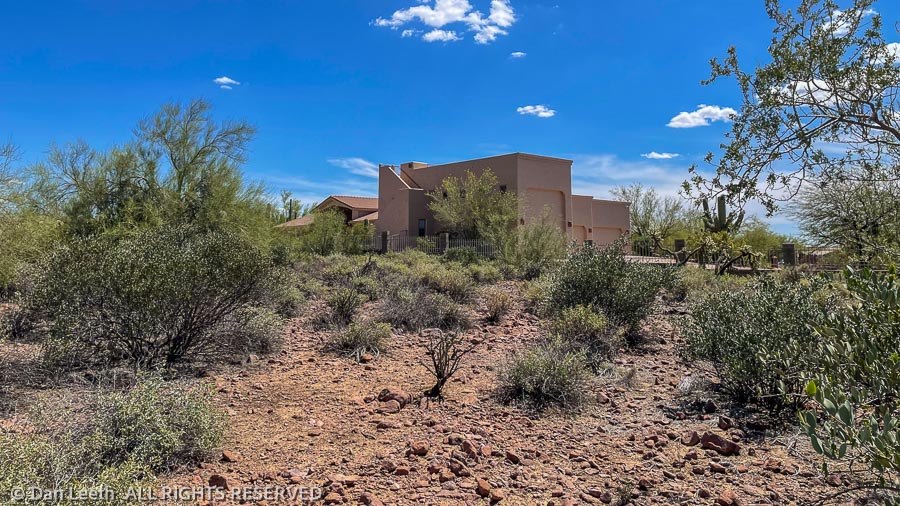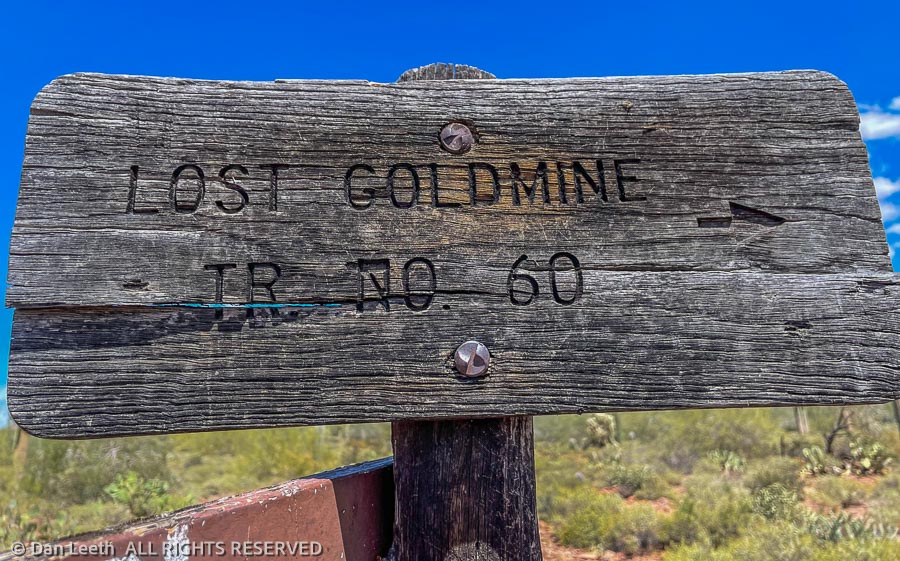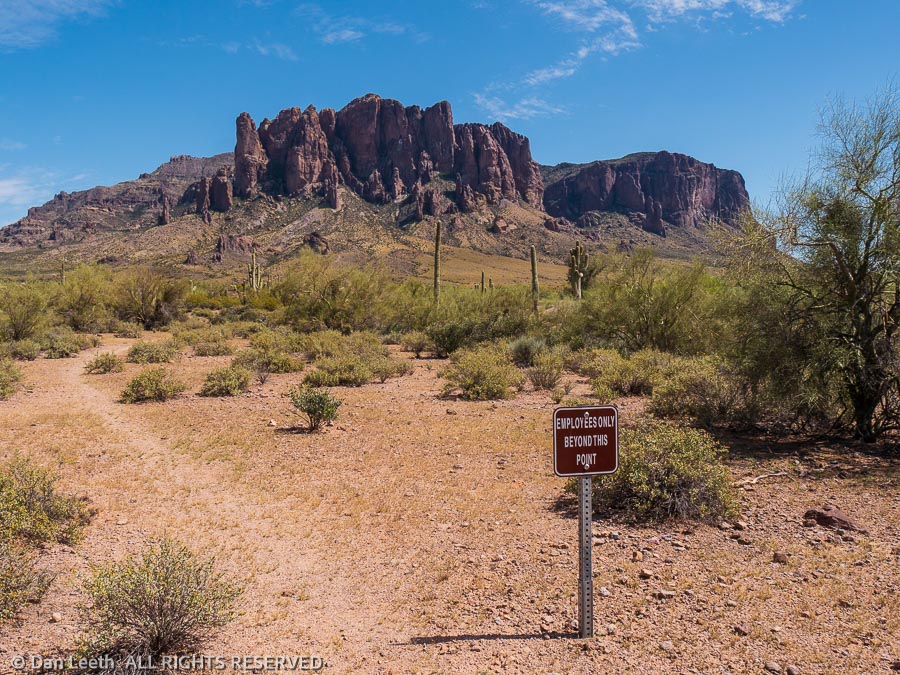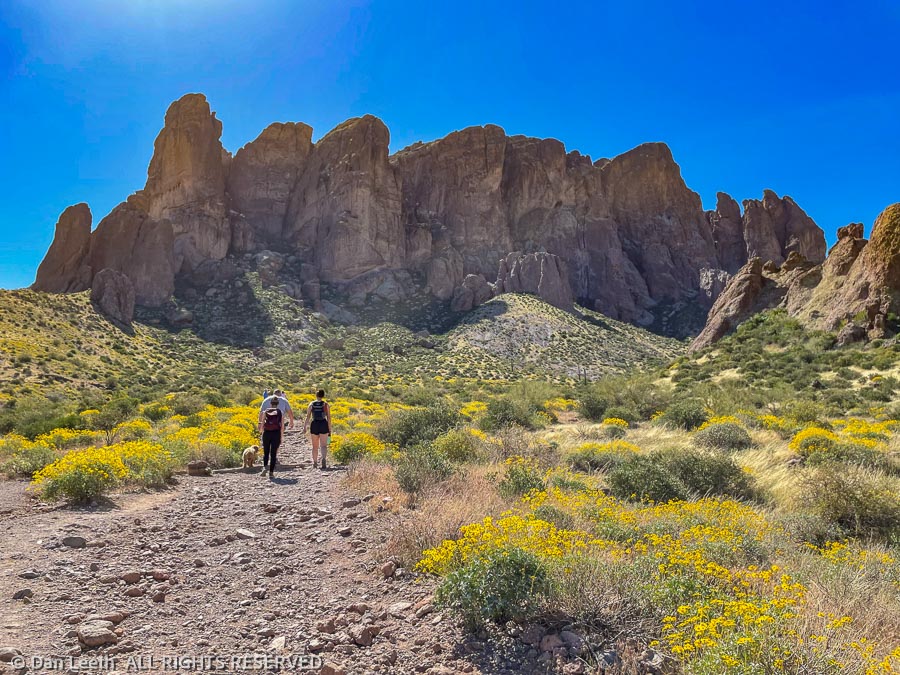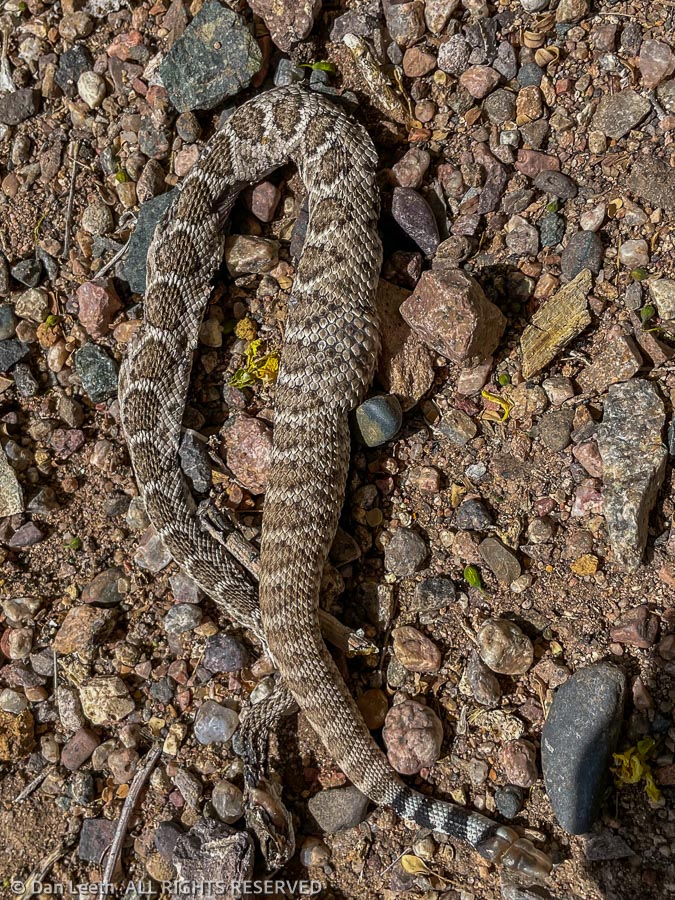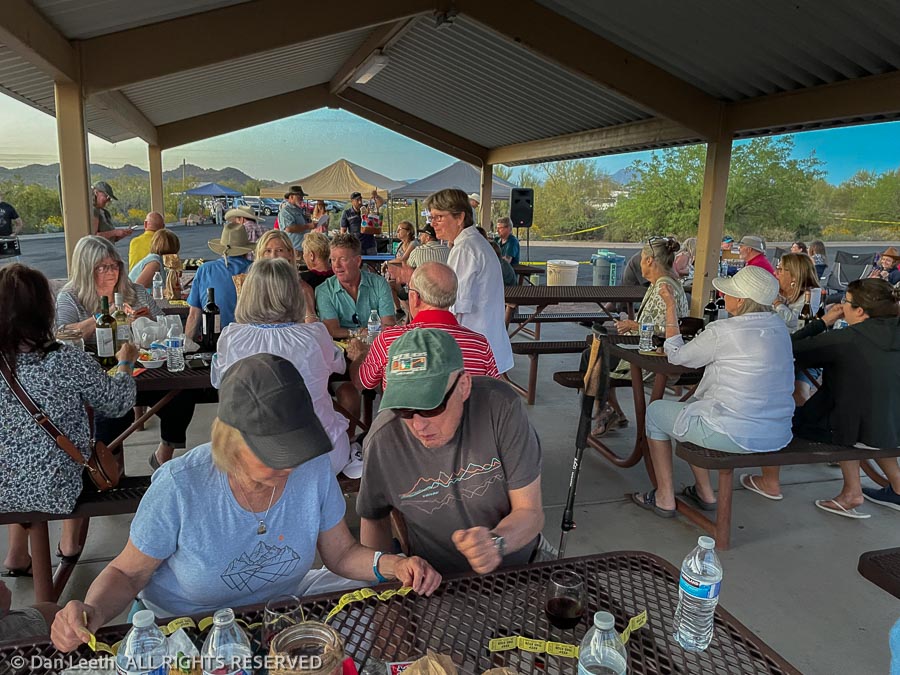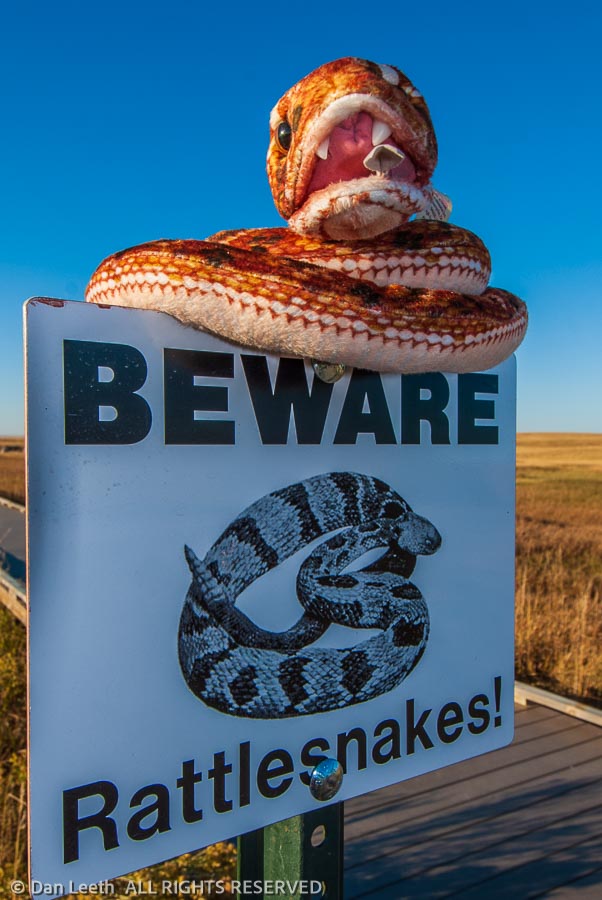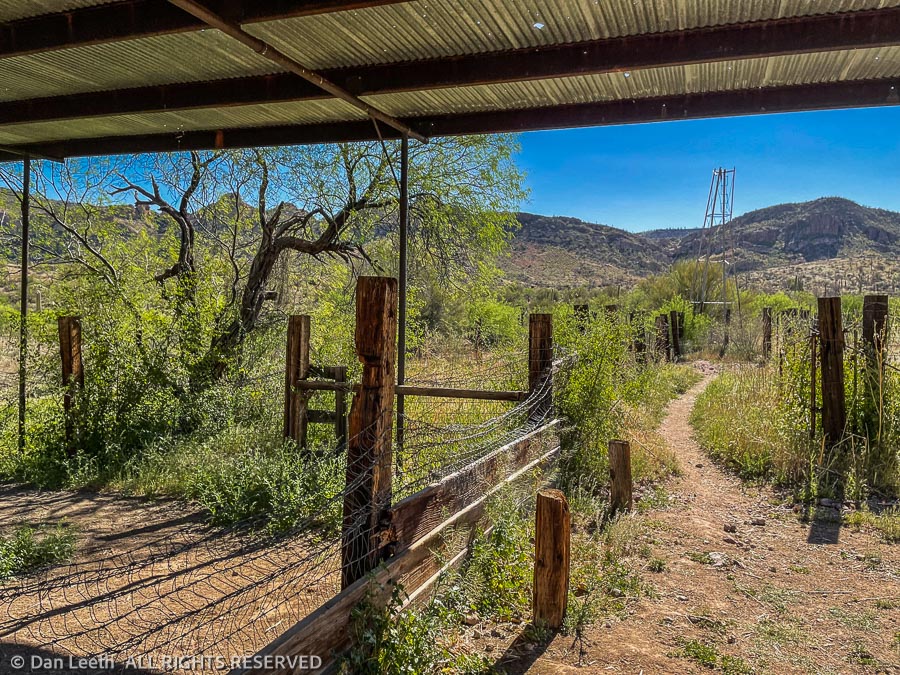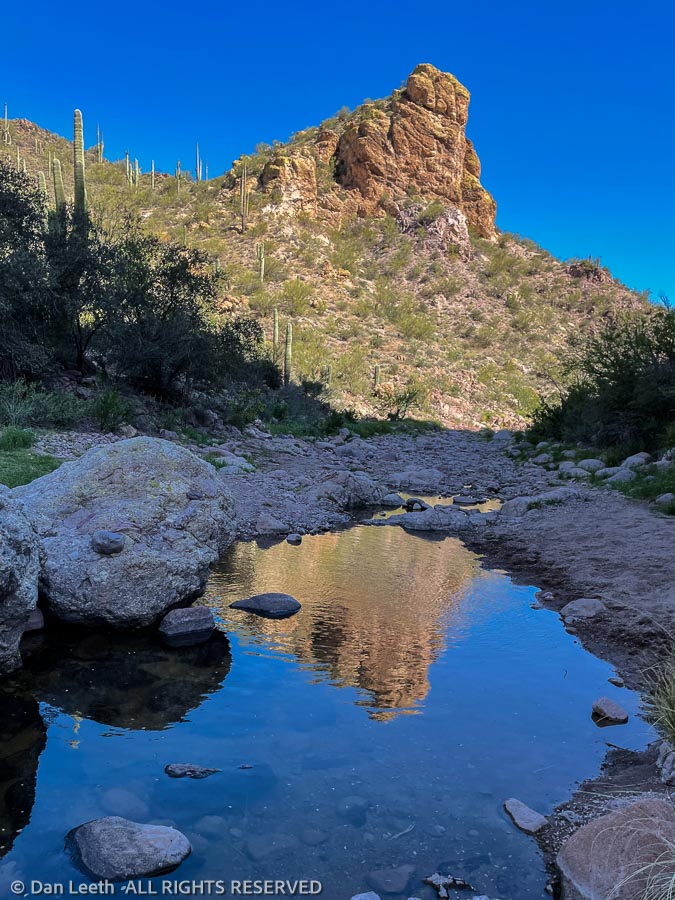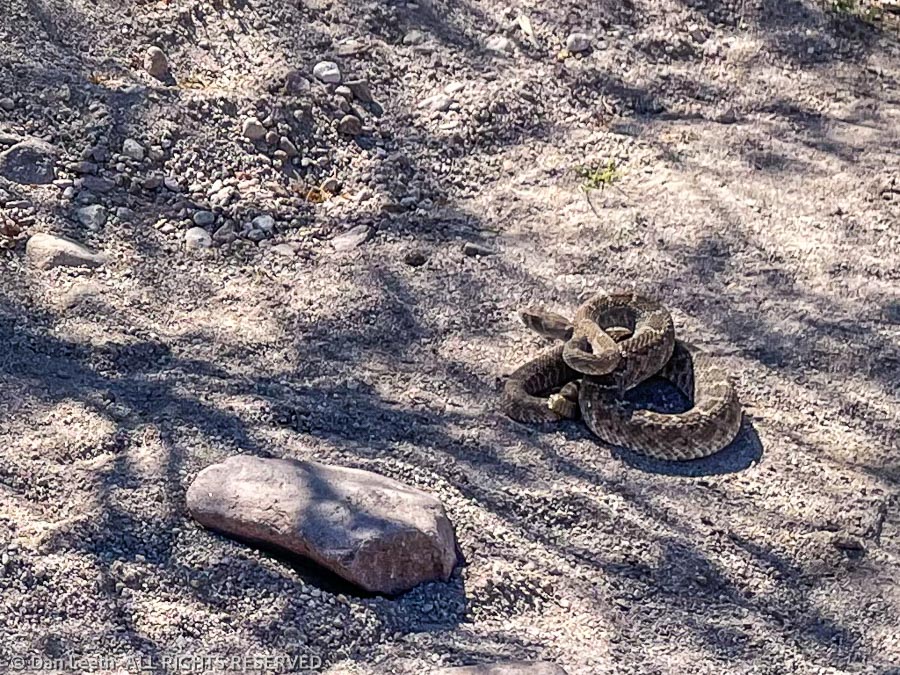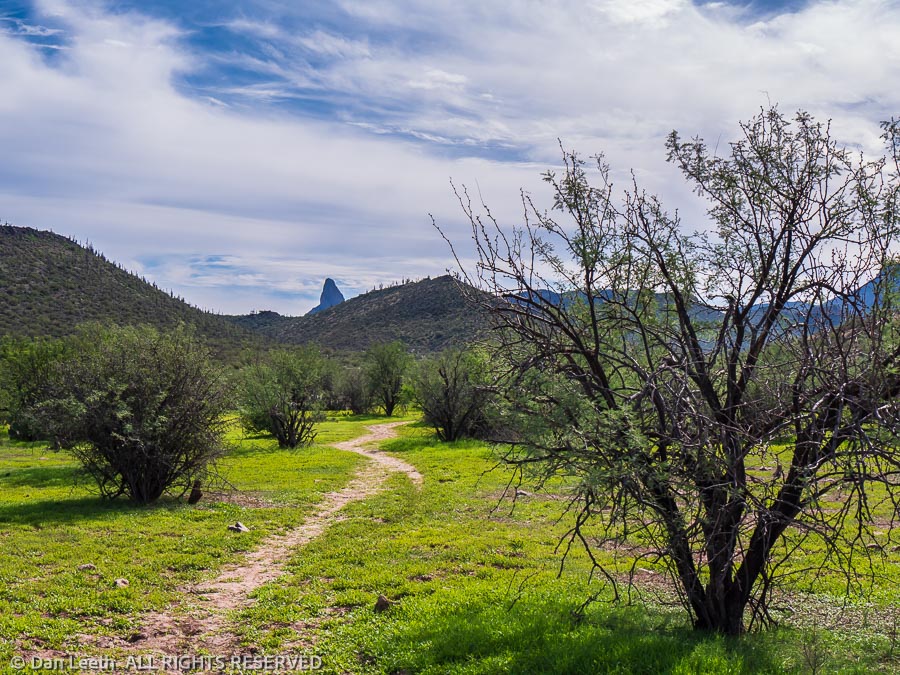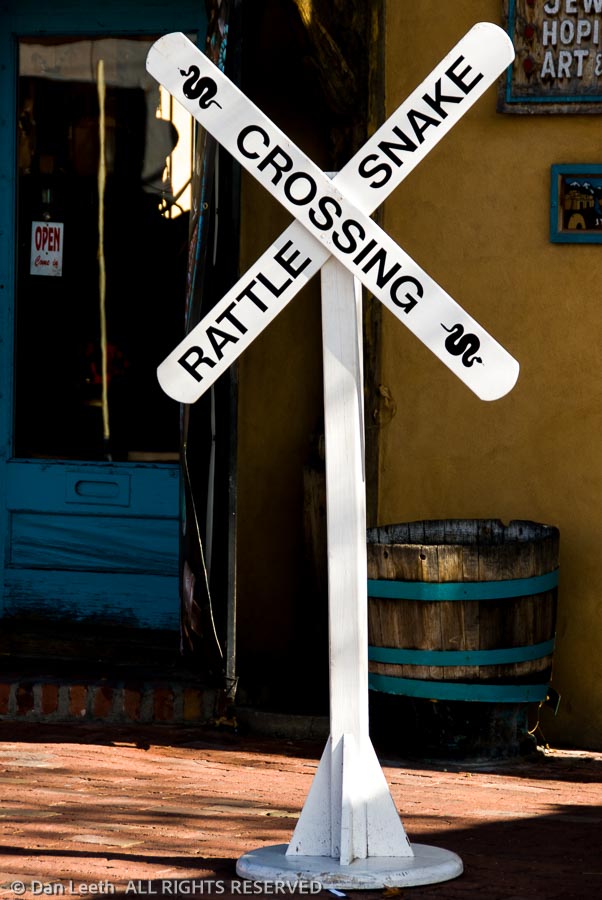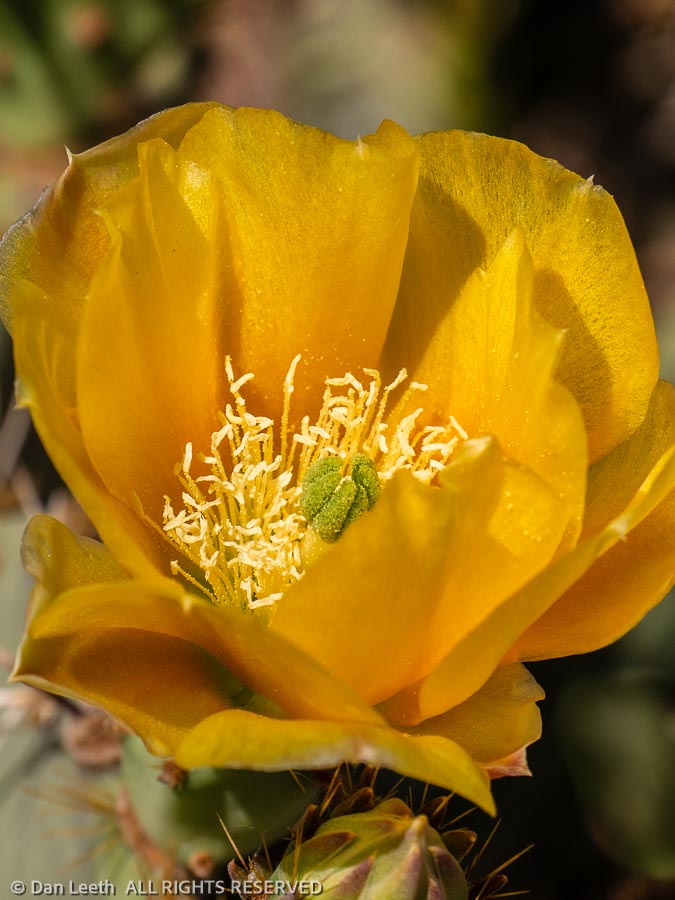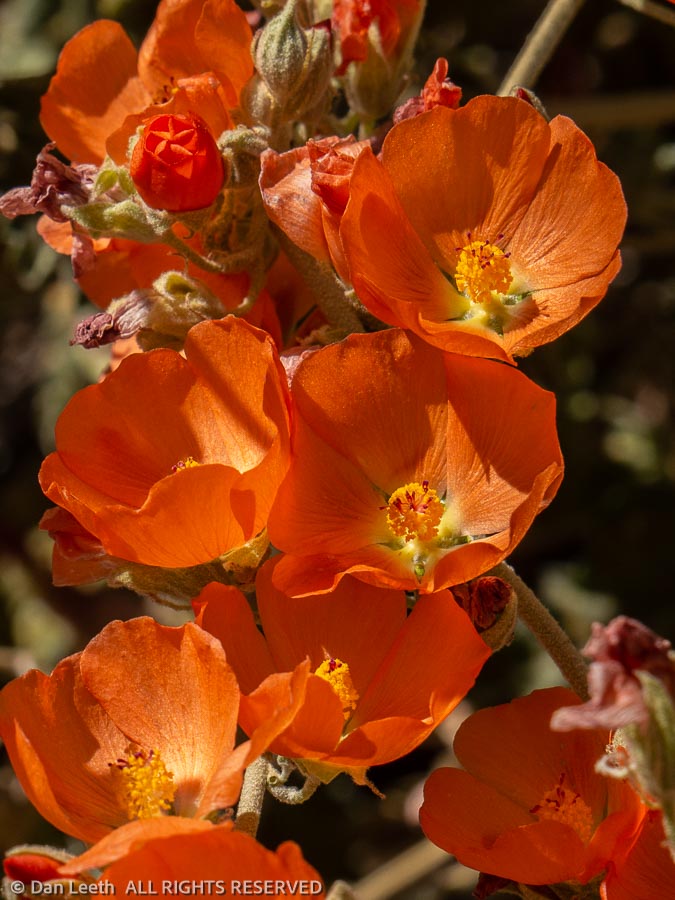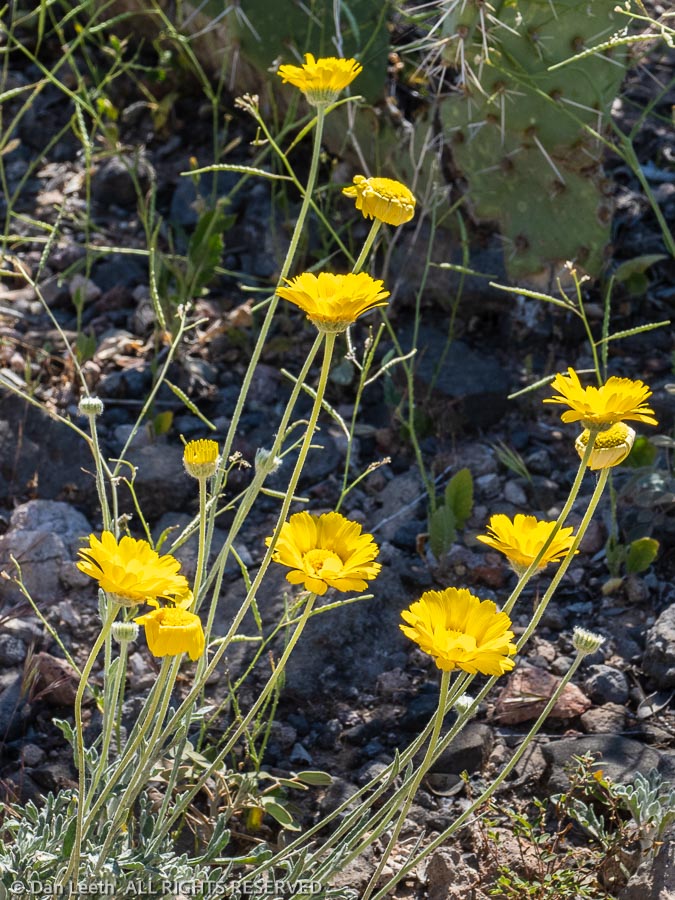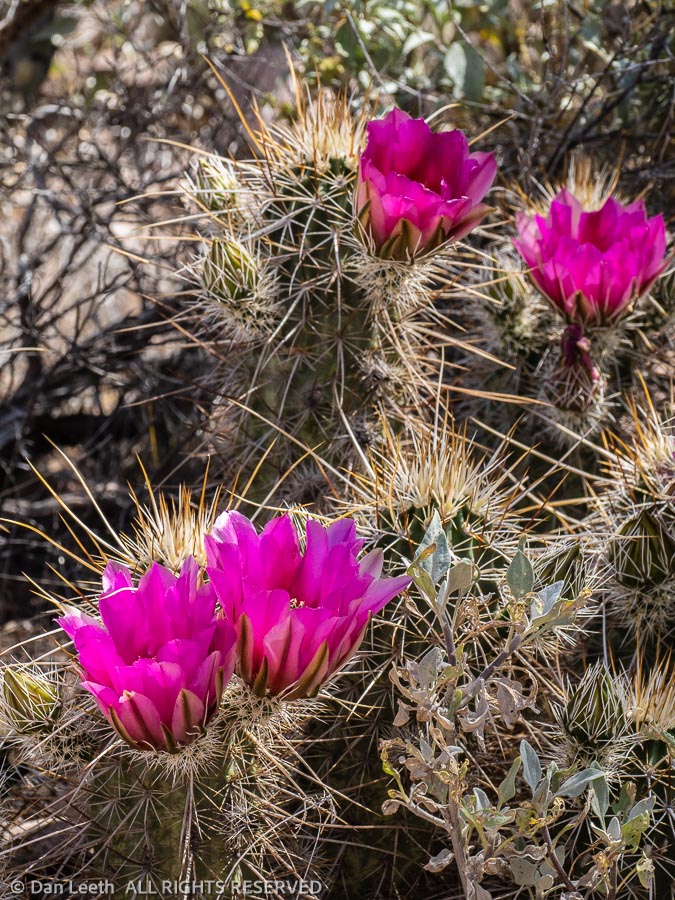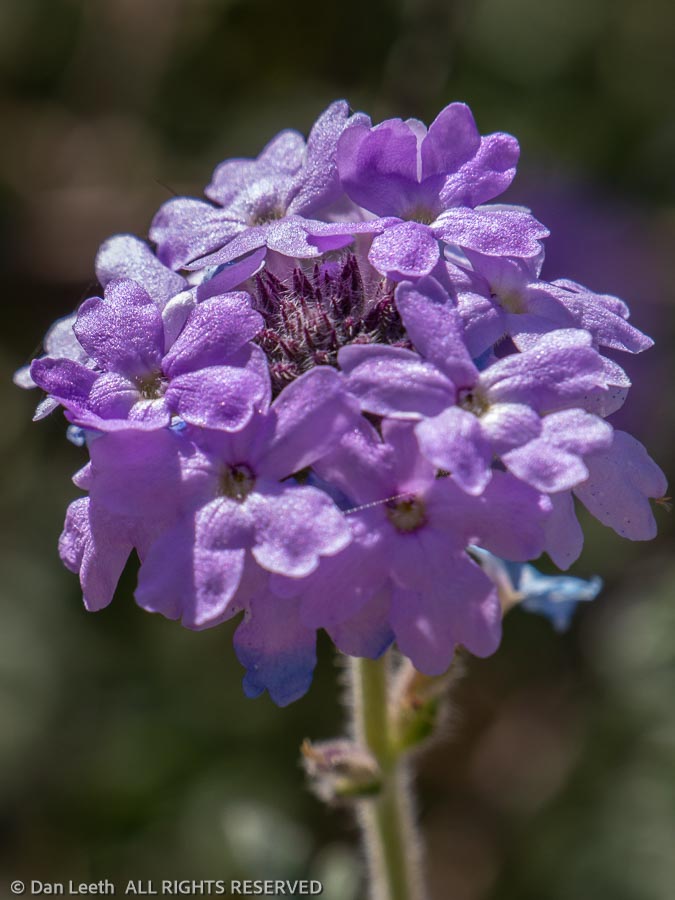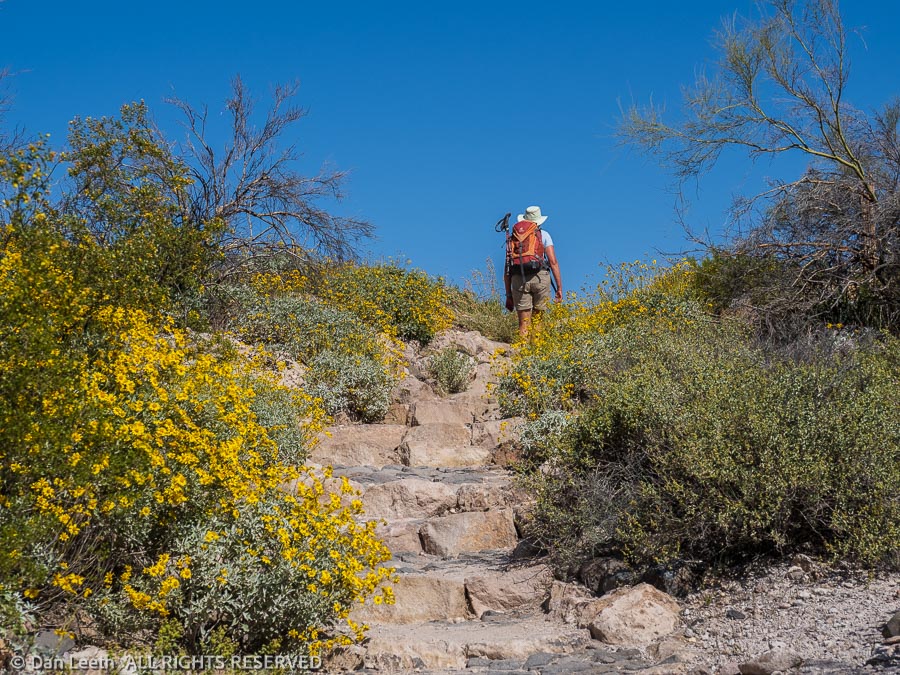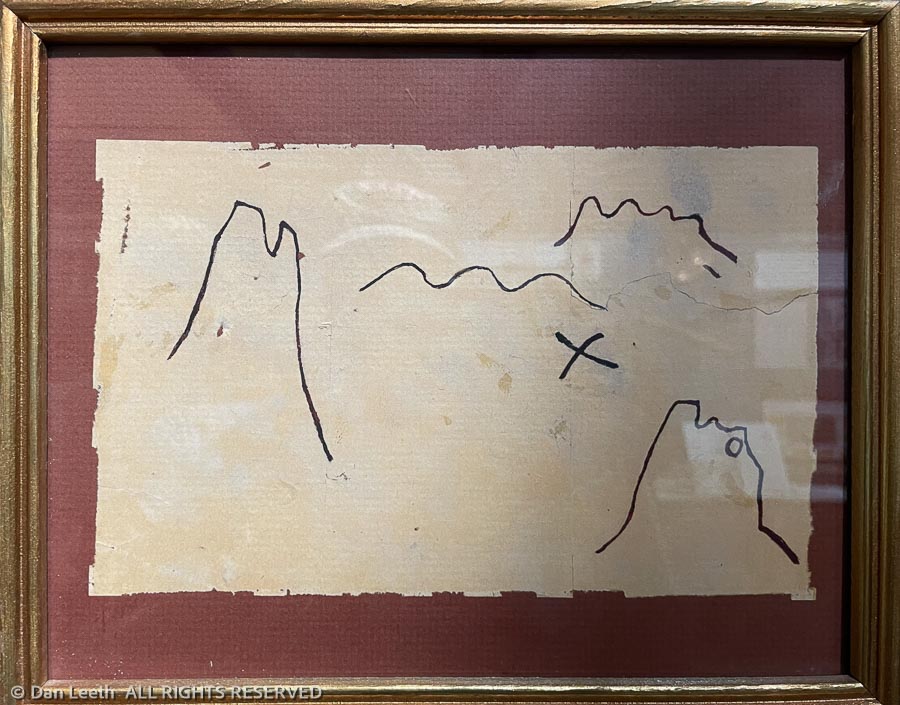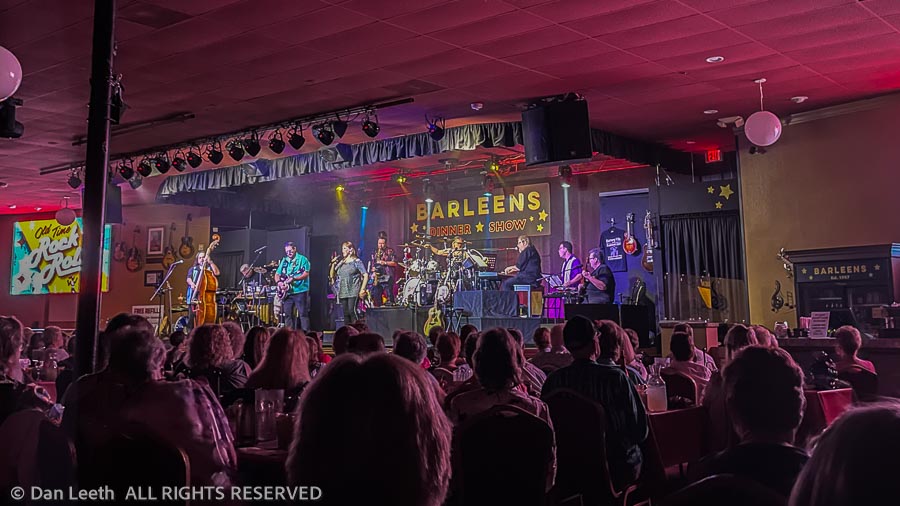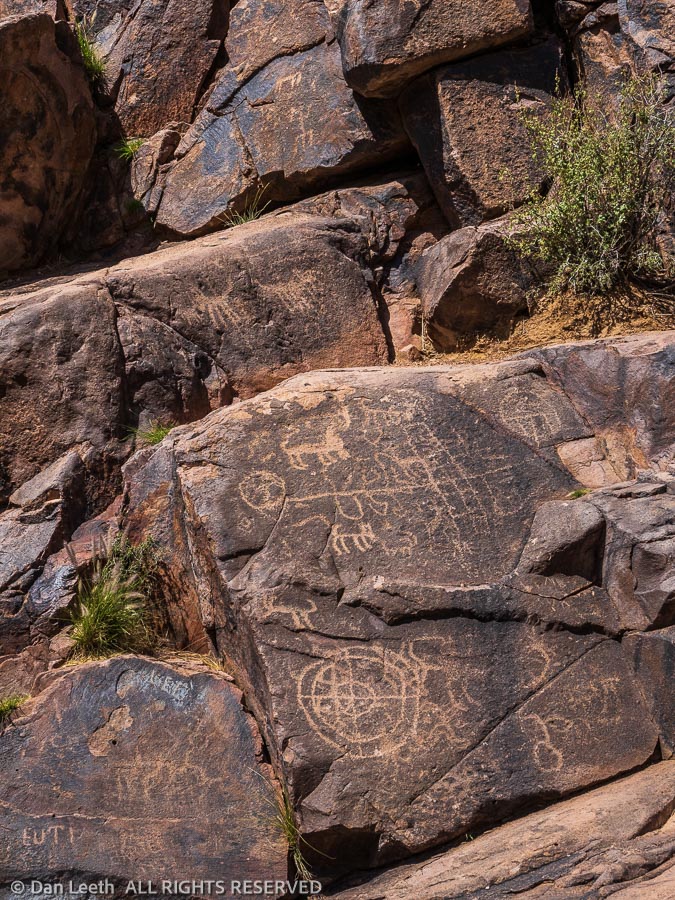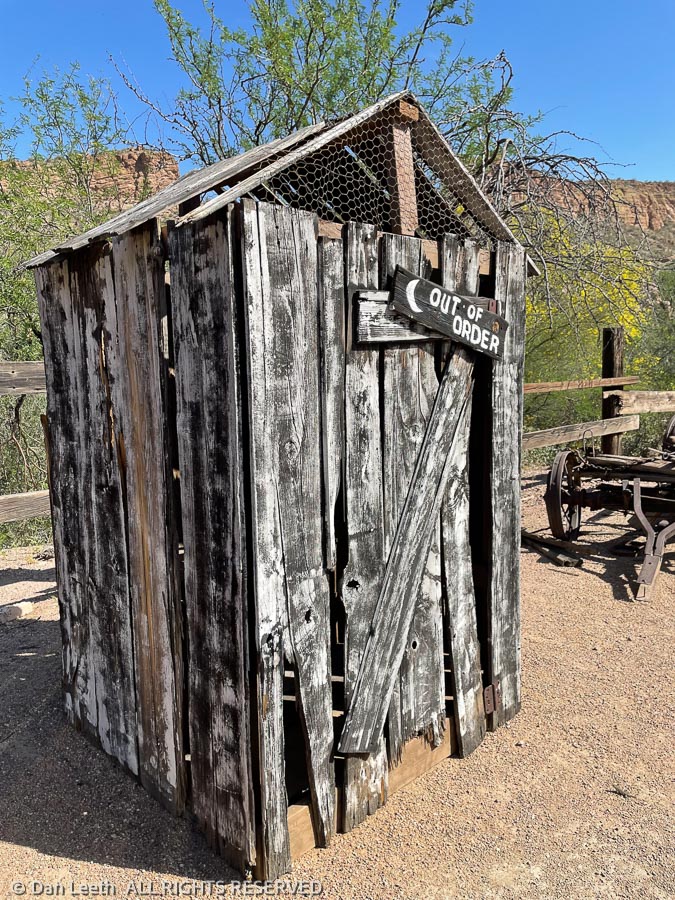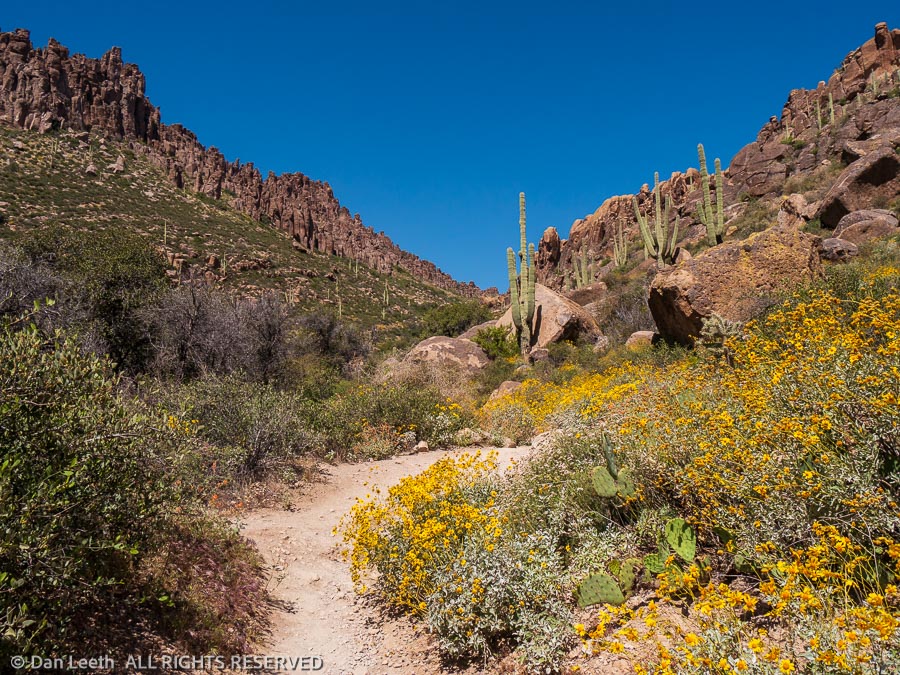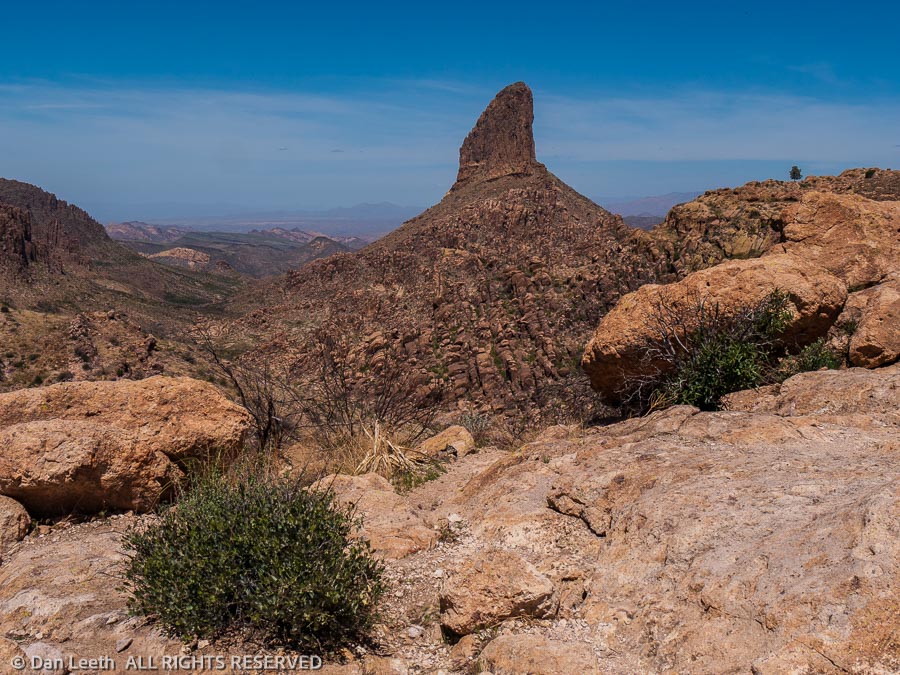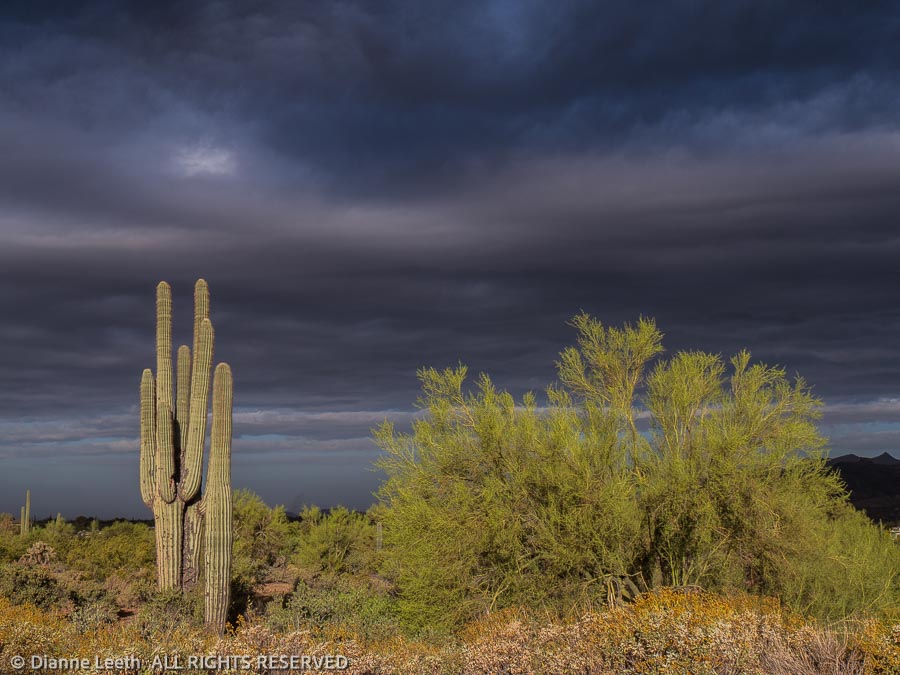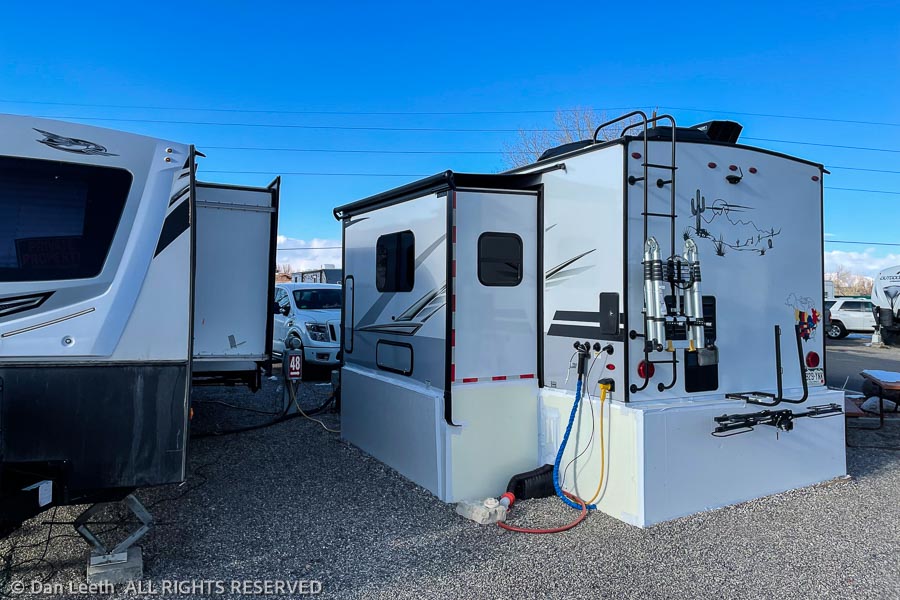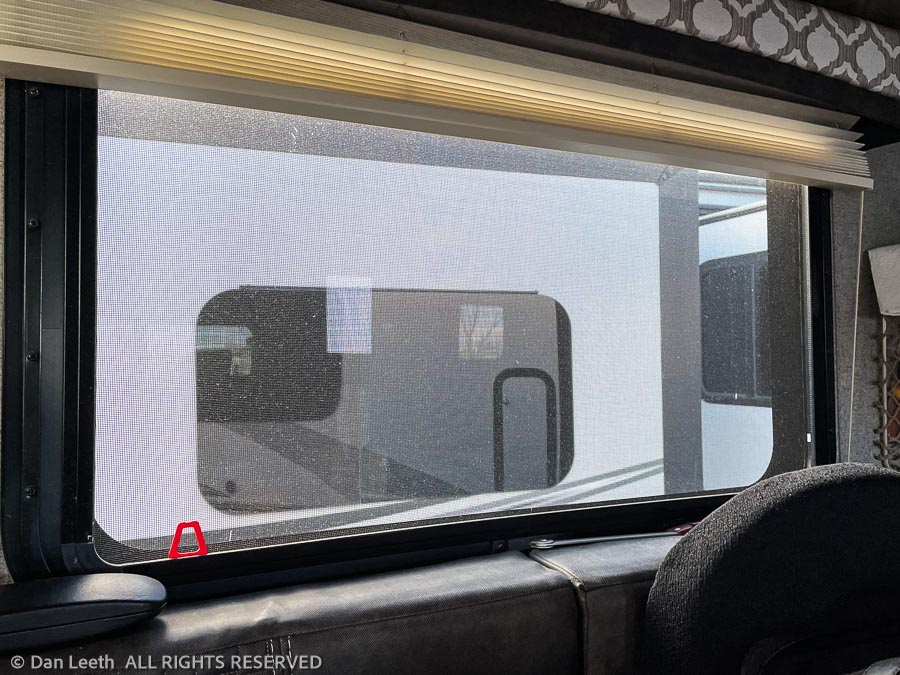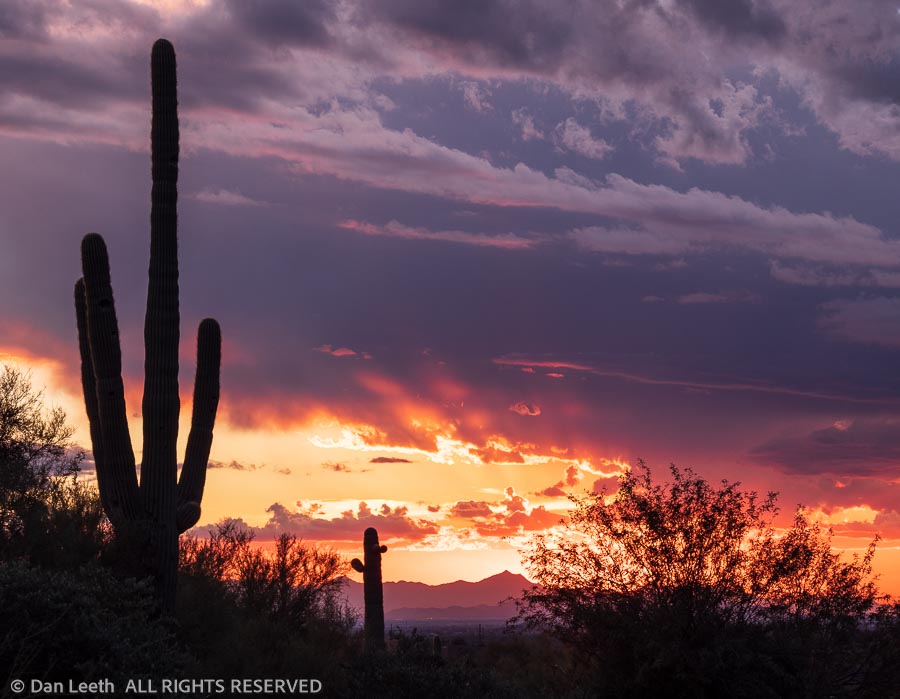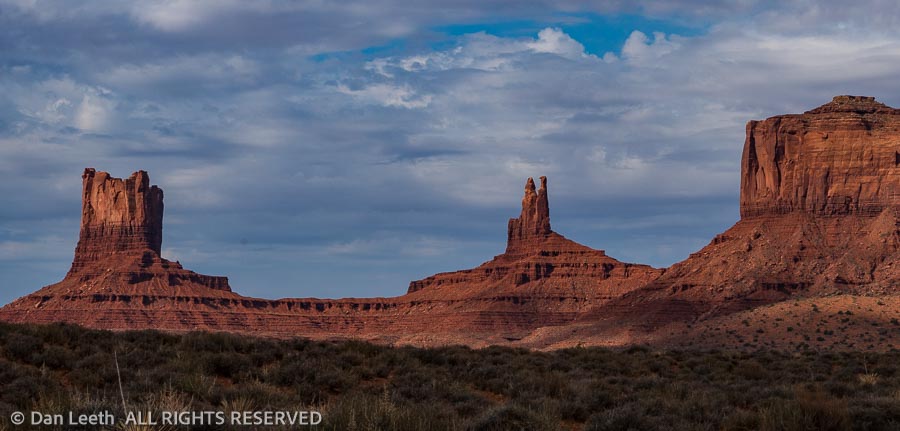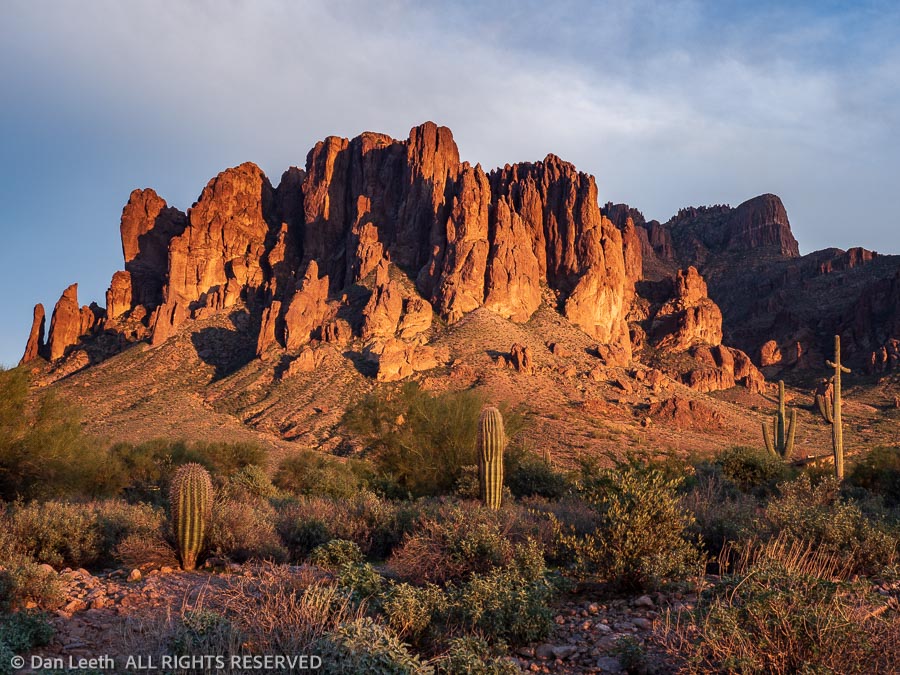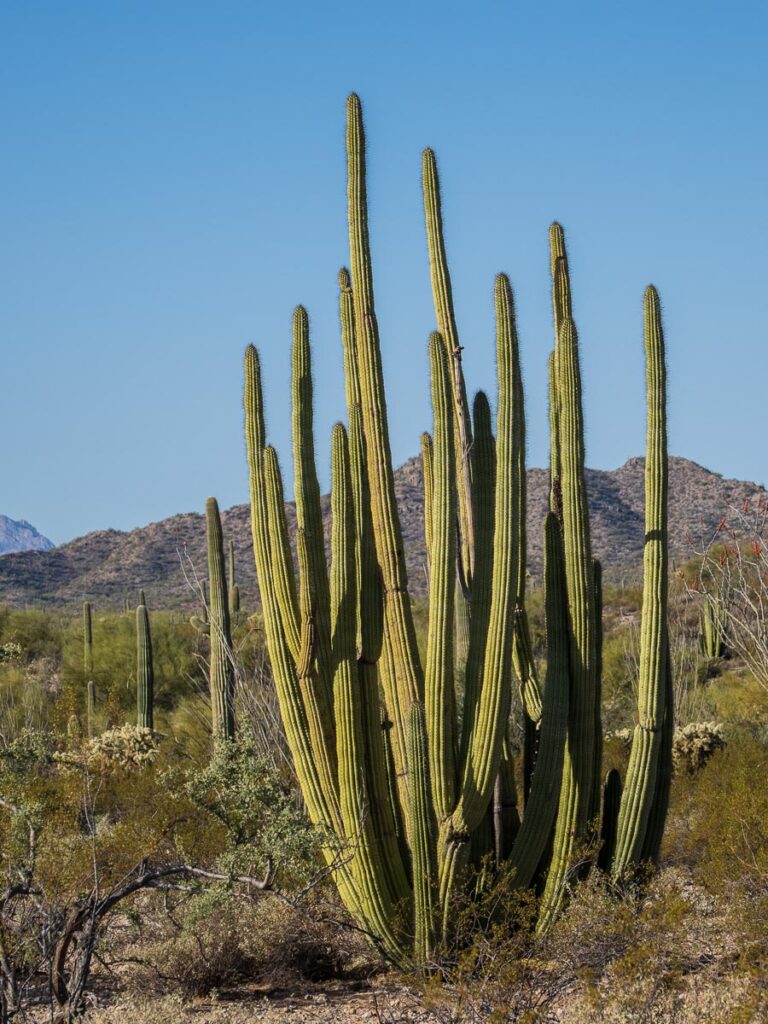
We have no hookups here in Organ Pipe Cactus National Monument. Our freshwater comes from an onboard tank filled from a spigot at the dump station. We’ll cart our used water back there in Bob, our 25-gallon honey wagon. We have only the sun to recharge our battery. Generators are not allowed in our section of the campground. The flush-toilet bathhouse is over 50 yards away, with the nearest solar-heated showers more than 100 yards away in the opposite direction. This is definitely not a KOA.
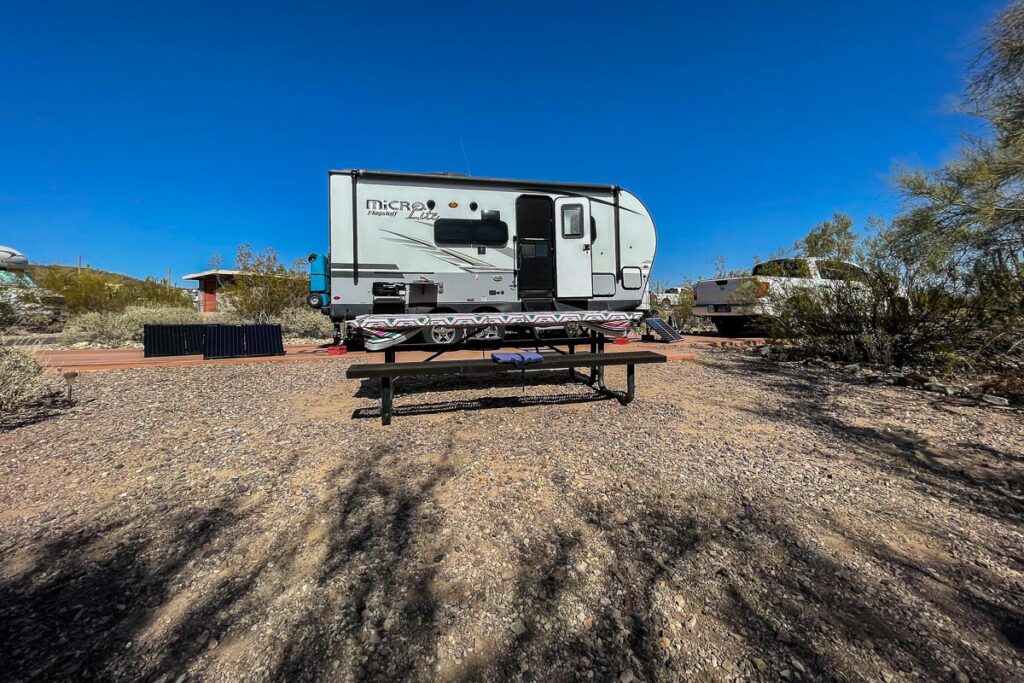
After pulling in and getting set up yesterday, we took a four-mile hike down to the Visitor Center for information and yes, for souvenirs. Back in camp, Consuela (Dianne’s undocumented, live-in pseudo-assistant) fixed barbecued chicken, which we downed with some of the finest (and only) boxed Spanish wine we brought from Colorado. Our Trader Joe’s wine waits in the Whitey’s wine cellar.
For the first time in months, we lingered outside after dinner, gazing at stars (not many because of the nearly full moon) and discussed our future. We decided that on the first day of the rest of our lives, we would throw caution to the wind and take a hike to two abandoned mine sites.
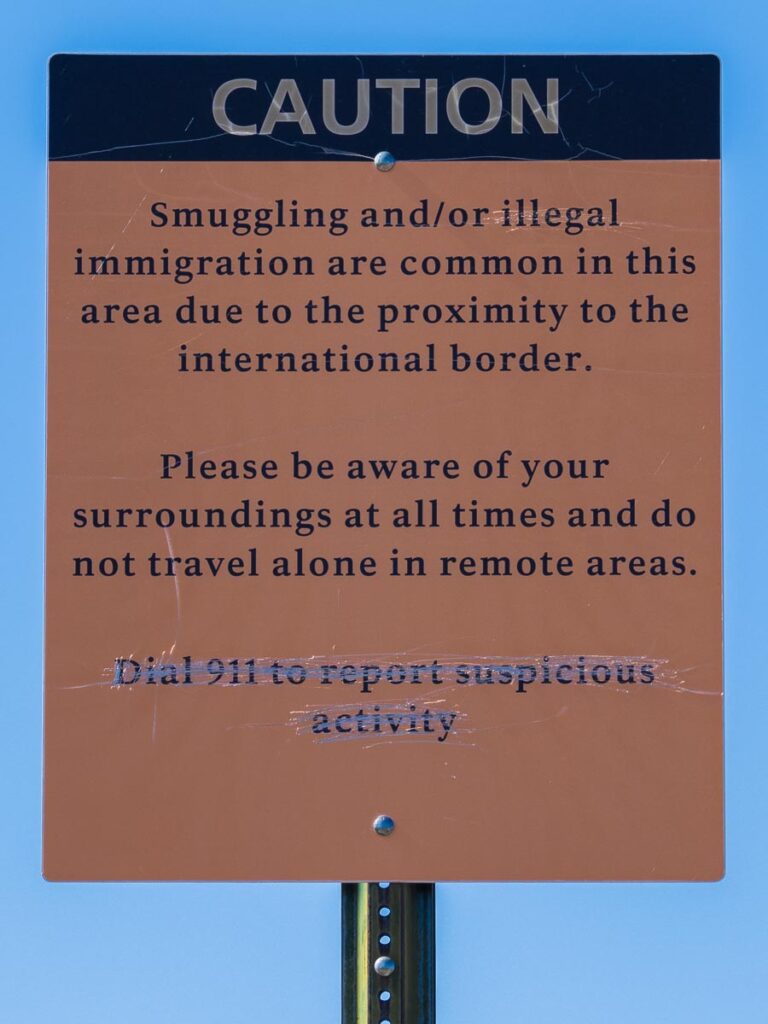
One would think that with The Donald’s magnificent new wall in place, we would no longer meet smugglers or immigrants on this side of the fence.
“Are there many holes in the wall?” I asked the ranger at the information booth.
“Plenty!” she responded.
Immigrants, she told us, can frequently be seen on South Puerto Blanco Drive, sitting by the roadside waiting to be picked up by border patrol. The smugglers, of course, try to avoid detection and will avoid all tourist-traveled areas.
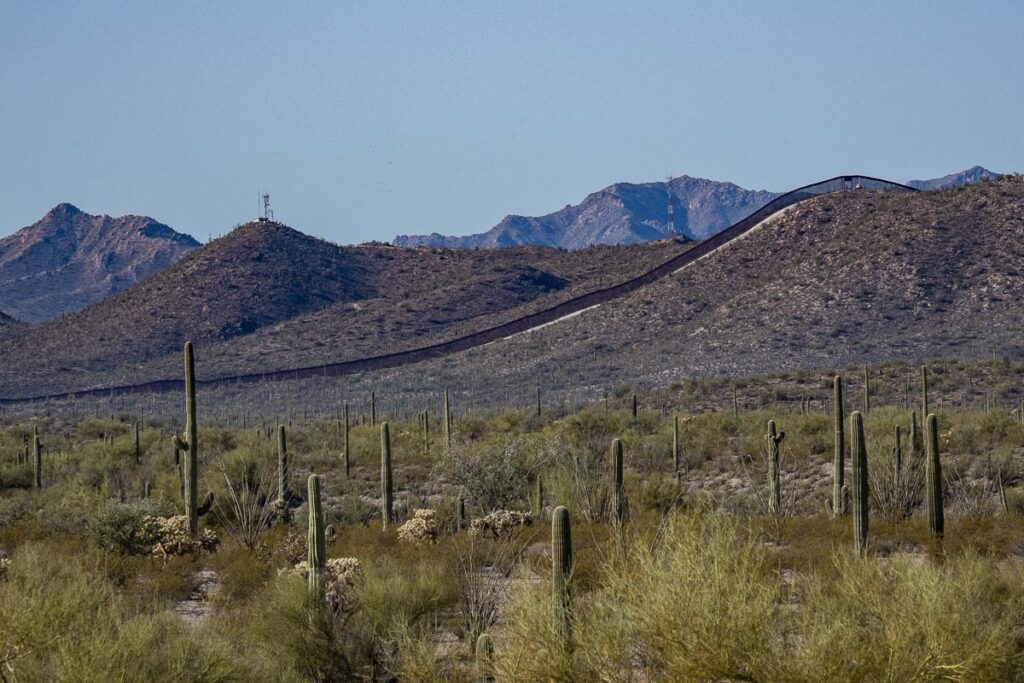
Our trail to the two historic mines started near the campground. Less than a mile from the trailhead, we got our first good look at the wall, about 5-7 miles to the south. From this distance, it looked like someone took a large Sharpie and drew a long, straight black line across the distant horizon with a white strip (the border patrol road) inscribed in front of it.
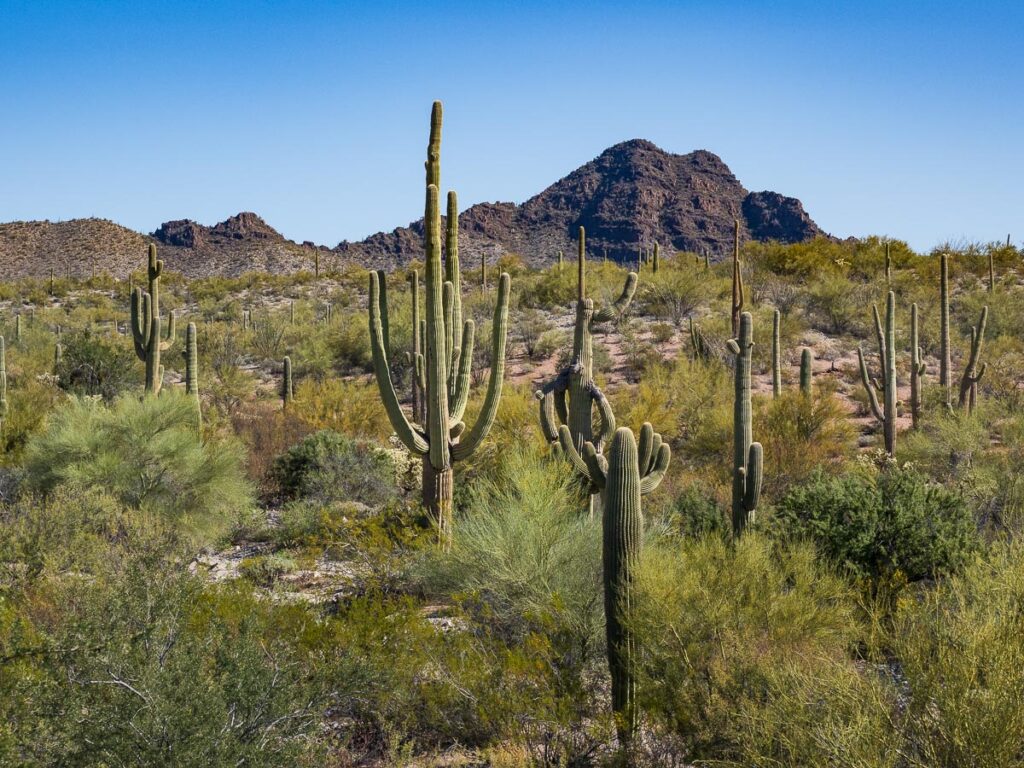
Our hike took us across the desert floor garnished with saguaro, organ pipe and several varieties of cholla cactus. Intermixed with the cactus were palo verde and mesquite trees along with ocotillo plants displaying buds ready to bloom.
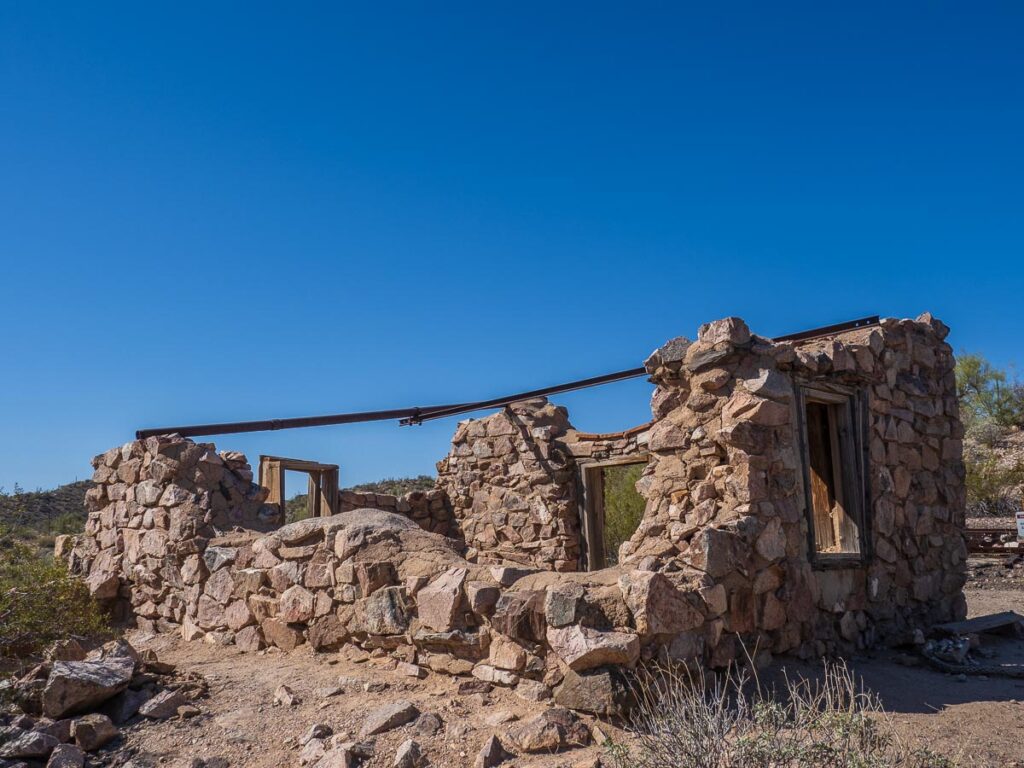
The first mine, the Victoria, lies about two miles from the trailhead. Rangers covered the mine shafts to keep people out while leaving them open for the bats, which like to hang out inside.
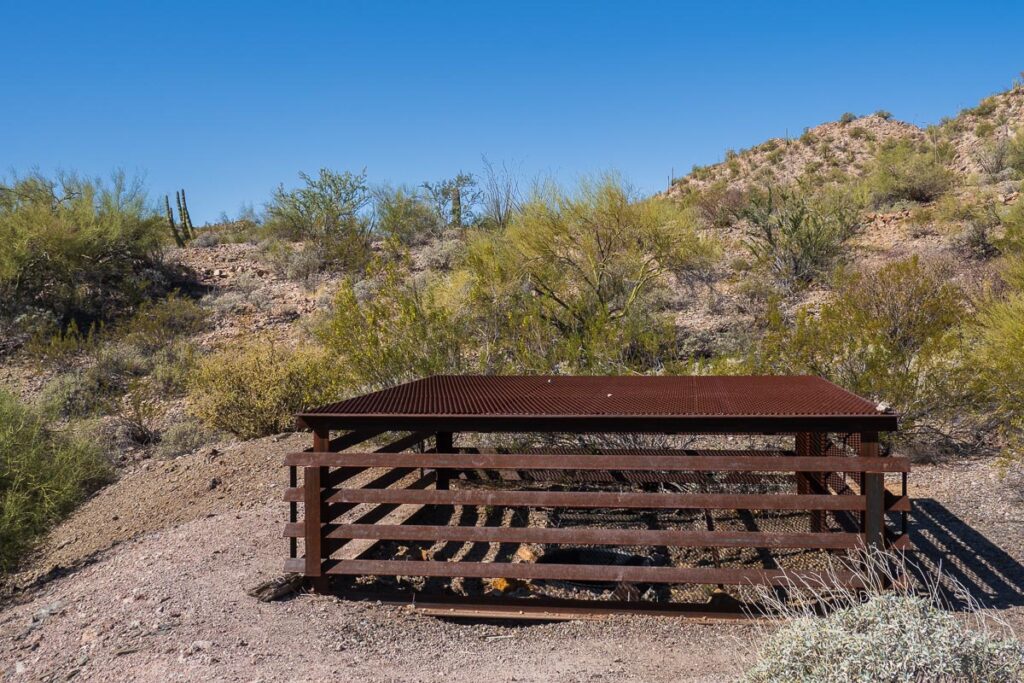
The only remaining structure was (according to the guidebook) the mine’s store. It apparently was closed for the season, or we might have bought some more souvenirs.
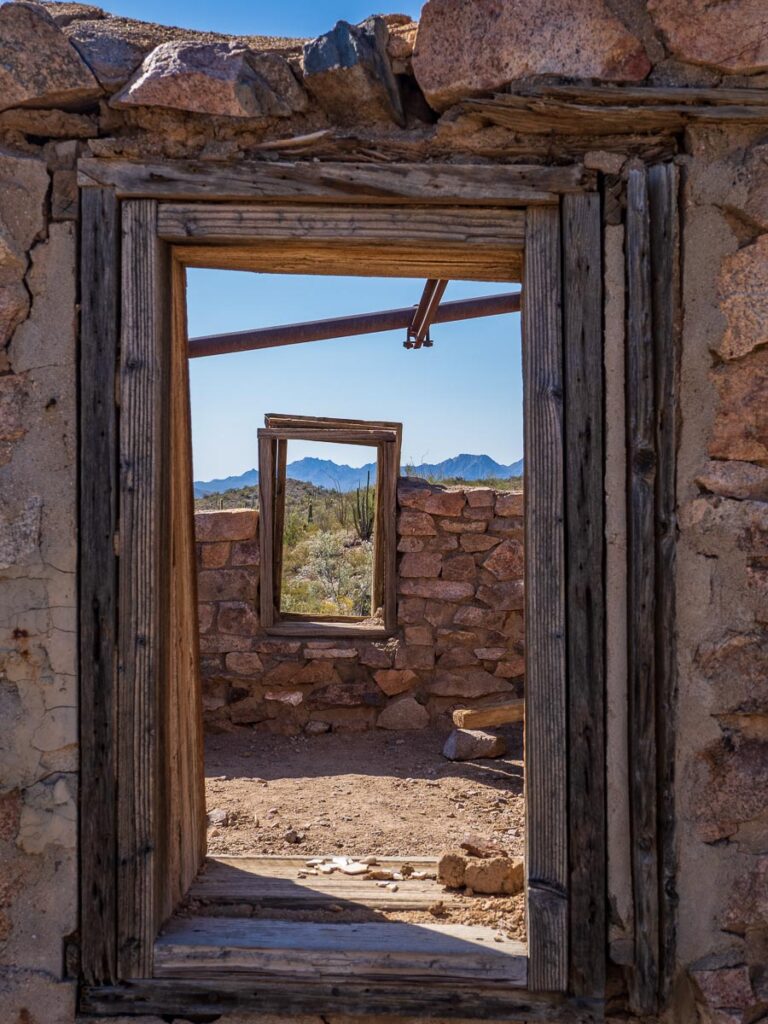
We shared the Victoria mine site with more than a dozen fellow hikers. We met only four other people continuing the additional two miles to the Lost Cabin Mine.
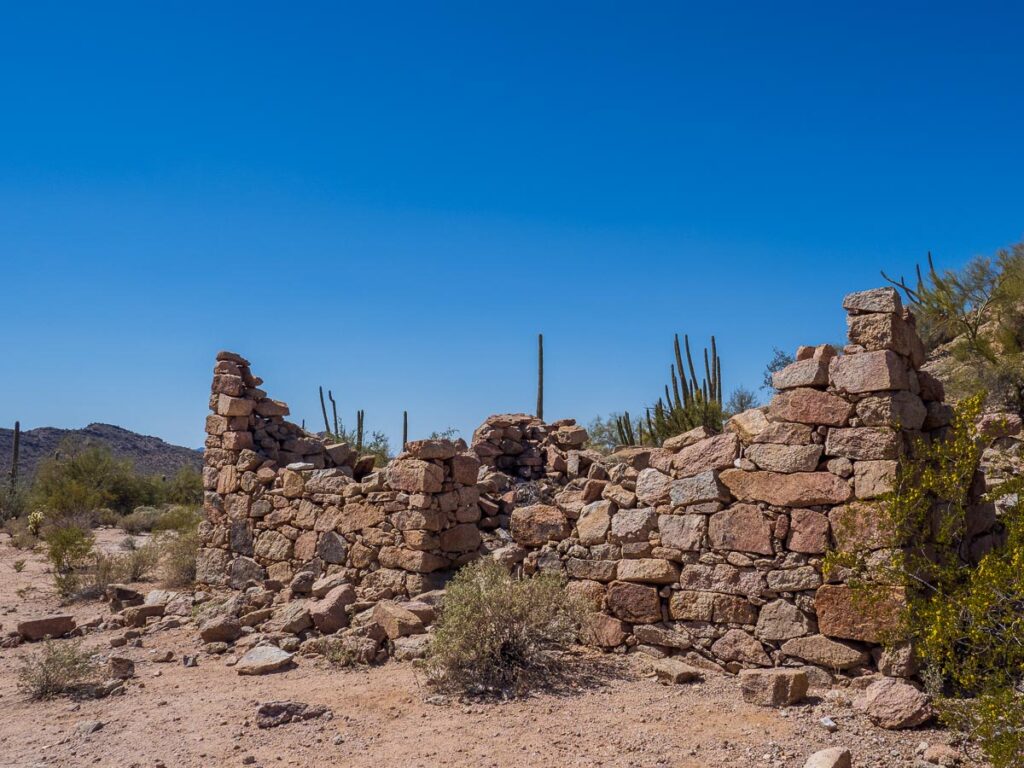
Here, too, we found the remains of one old stone building. The guidebook did not reveal its intended purpose, and we didn’t really care. It was time to turn around.
Back at camp, we shared our one chilled beer (a refrigerator-filling error that will never be repeated), stretched our sore muscles and then got to work uploading photos to our computers.
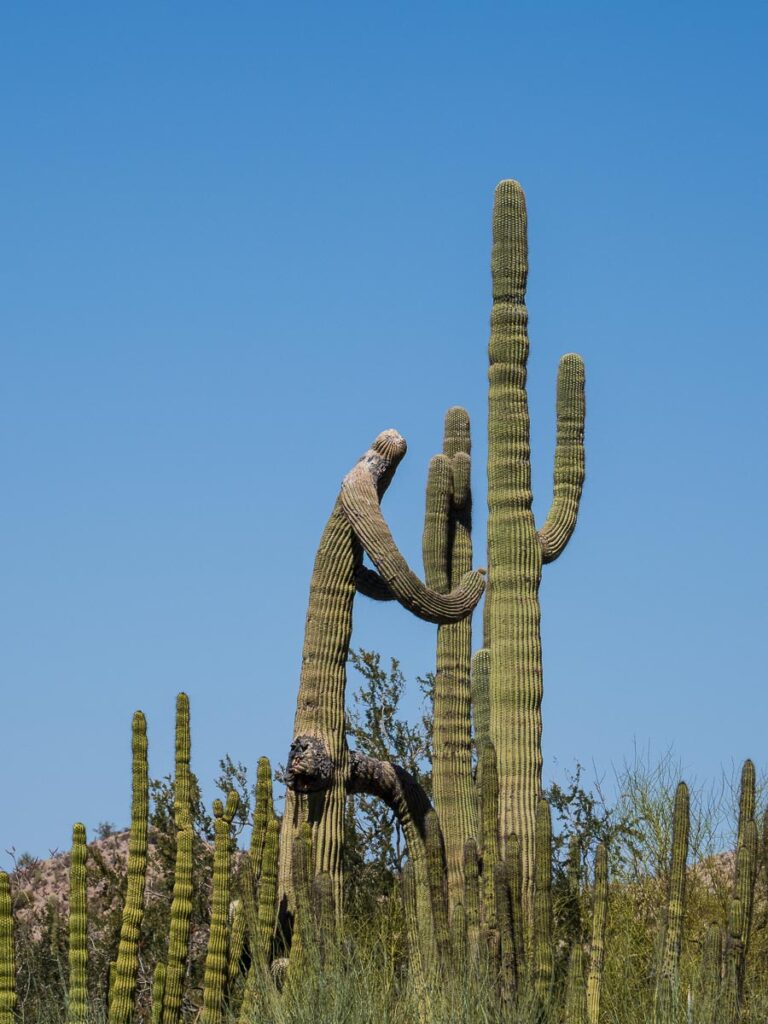
No life of leisure for us. After all, this is camping.

